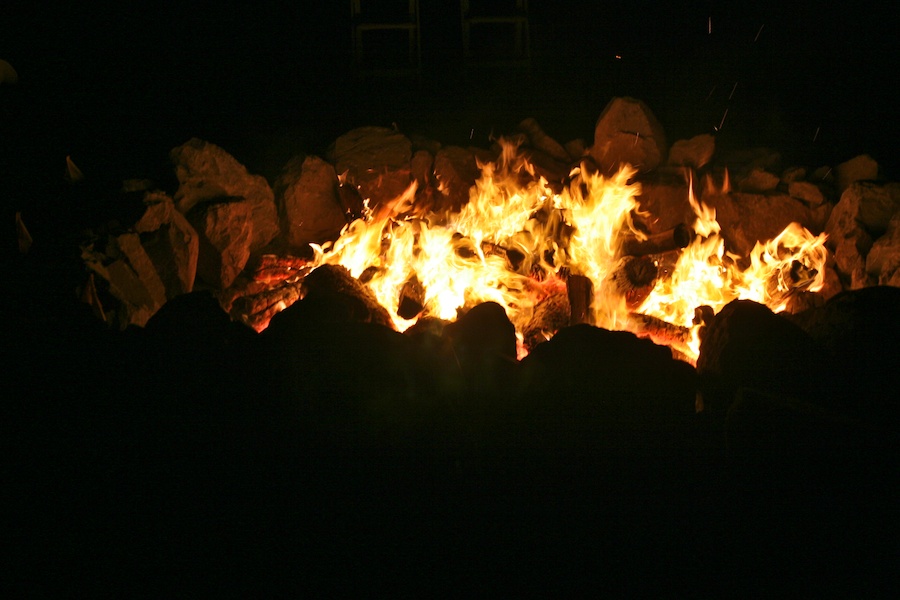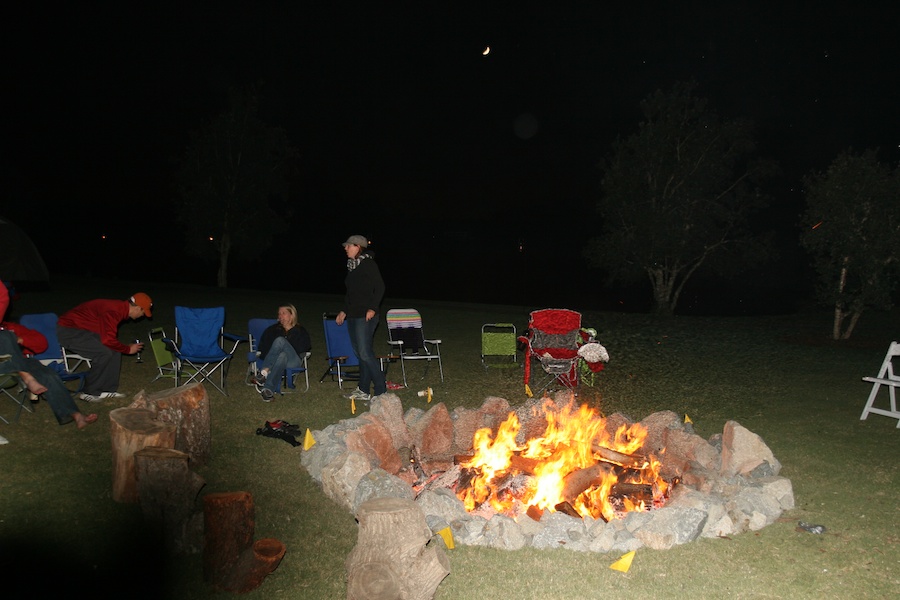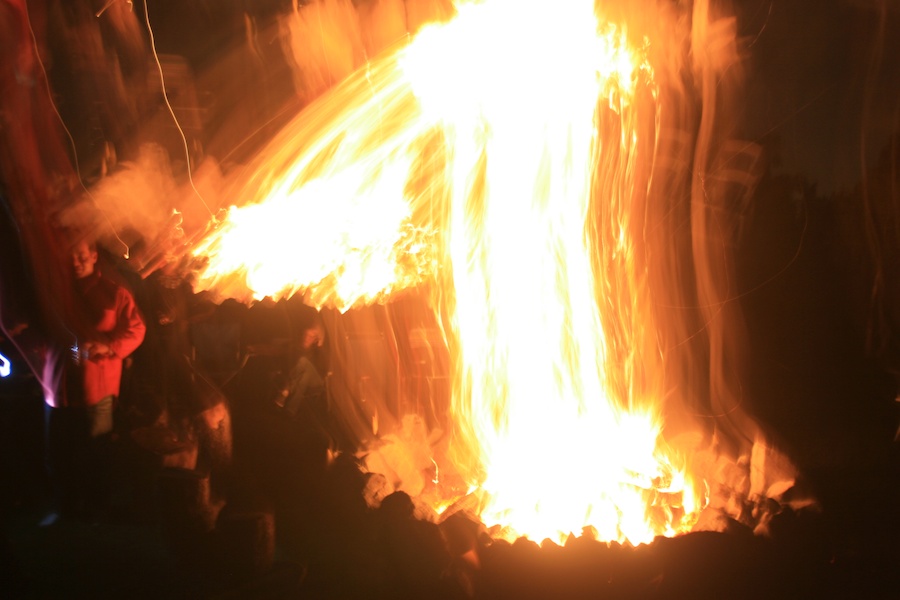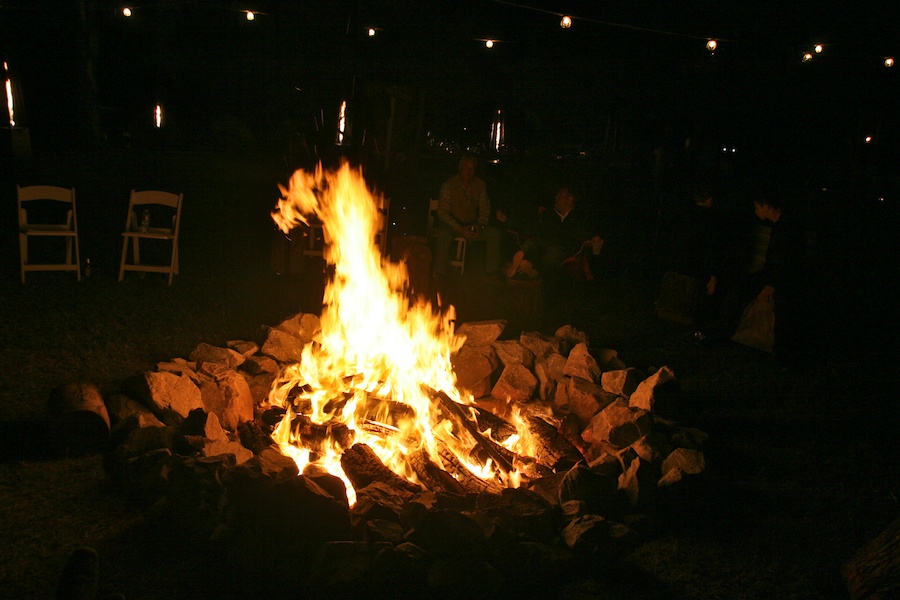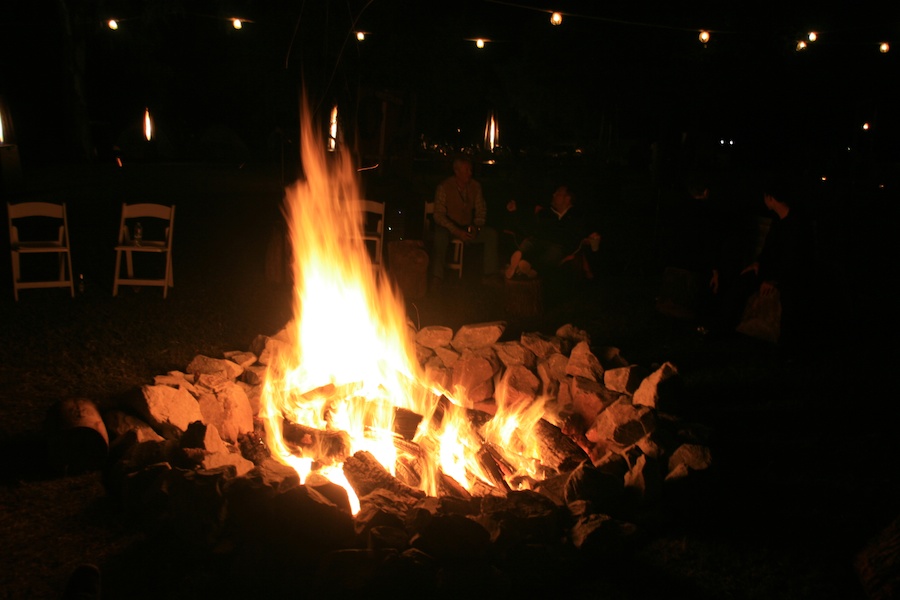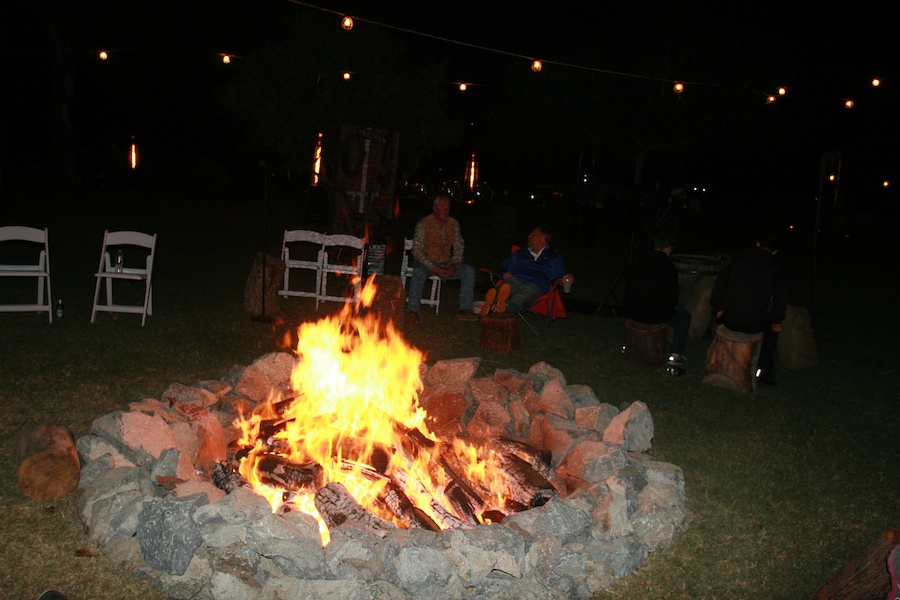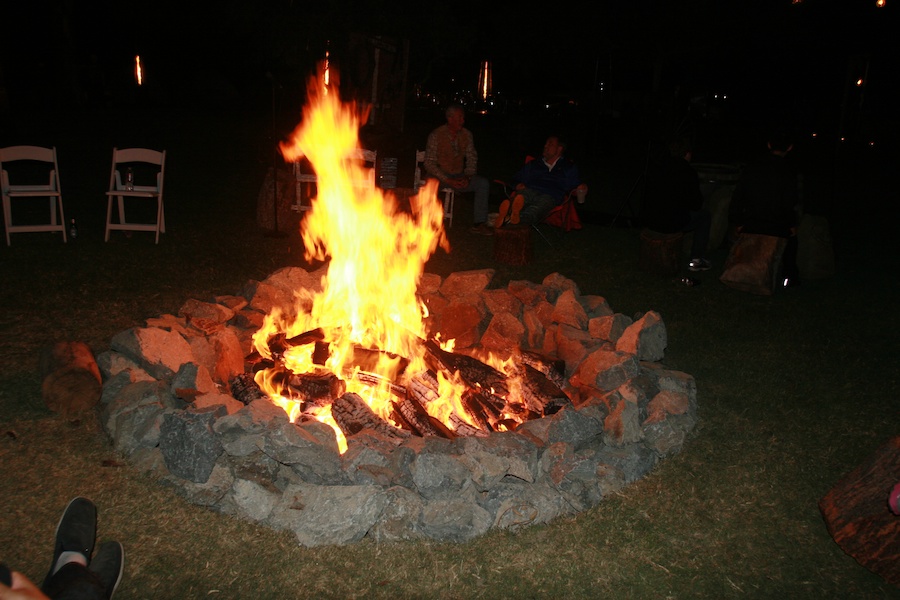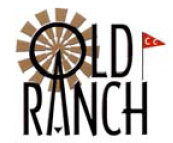Last Minute Arrangements, Time To Eat & The Camp Fires (Page Three)
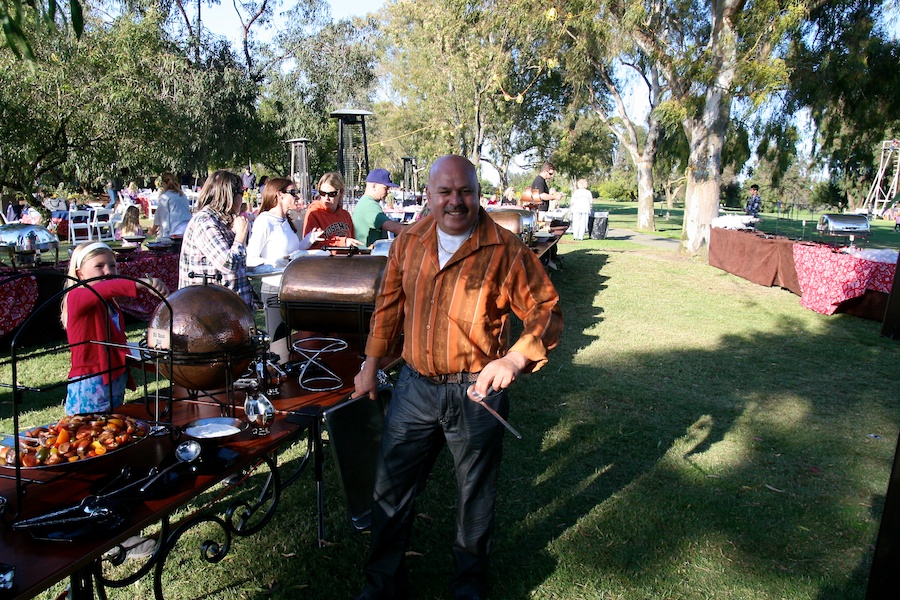
May I assist you???
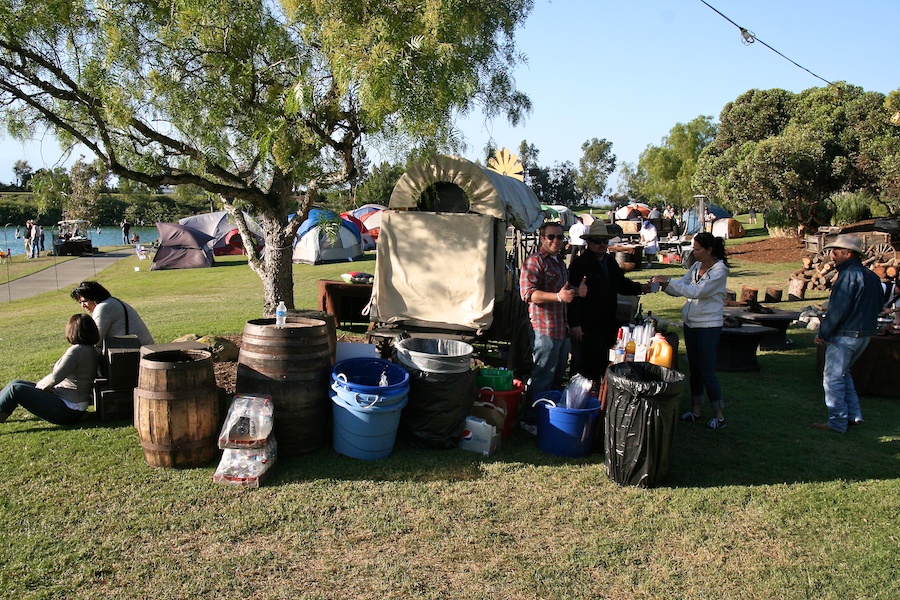
The bar is in good hands
Saying hear around the bar....
He didn't have manners enough to carry guts to a bear.
He couldn't hit a bull's rump with a handful of banjos.
He was as drunk as a fiddler's clerk.
She's as nervous as a long-tailed cat in a room full of rocking chairs.
He'd been in the desert so long, he knew all the lizards by their first names.
He ain't fit to shoot at when you want to unload and clean yo' gun.
His mustache smelled like a mildewed saddle blanket after it had been rid on a soreback hoss three hundred miles in August.
He was grittin' his teeth like he could bite the sites off a six-gun.
It was so dry the bushes followed the dogs around.
He'd been in the desert so long, he knew all the lizards by their first names.
He's as as dead as a can of corned beef.
He's as welcome as a rattlesnake at a square dance.

The express is taking off.... Overheard on the radio....
"Dispatch... This is Swinheart flight 878, requesting takeoff authorization...."
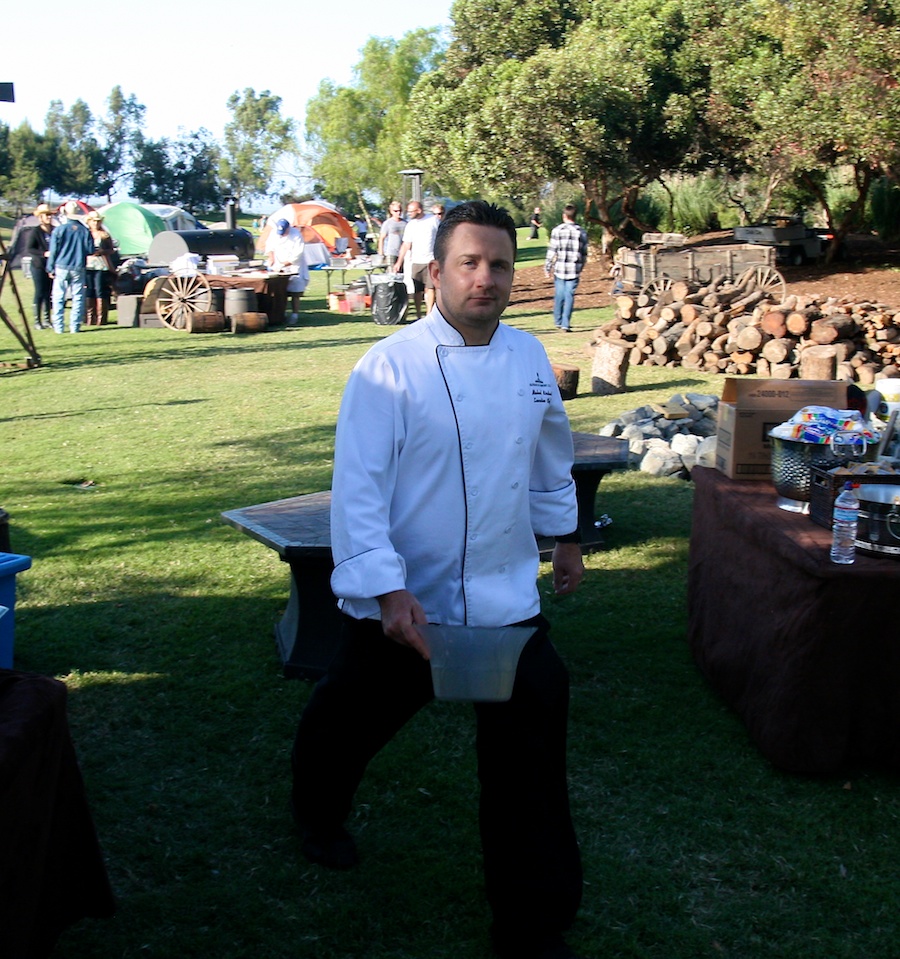
Does he look worried????

Corn on the cob????
Did You Know? - Corn on the cob (known regionally as "pole corn", "cornstick", "sweet pole", "butter-pop" or "long maize") is a culinary term used for a cooked ear of freshly picked maize from a cultivar of sweet corn. Sweet corn is the only variety of maize eaten directly off the cob.
The ear is picked while the endosperm is in the "milk stage" so that the kernels are still tender. Ears of corn are steamed or boiled, usually without their green husks, or roasted with them. The husk leaves are in any case removed before serving.

Food everywhere.... No one will starve tonight
Did You Know? -
Early frontier cooking was greatly influenced by place and season. Indigenous plants and animals supplied much of the food. Other provisions (flour, dried beans, coffee, sugar, etc.) were stocked at points of origin and resupplied along the way. The first pioneers in most places ate by campfires. By necessity, foods were cooked by very simple methods. Dutch ovens, frying pans, boiling pots, and roasting spits were typically employed. As settlements grew, so did the range of cuisine. Why? Improvements in housing and transportation enabled a greater variety of food to be prepared in more traditional ways.
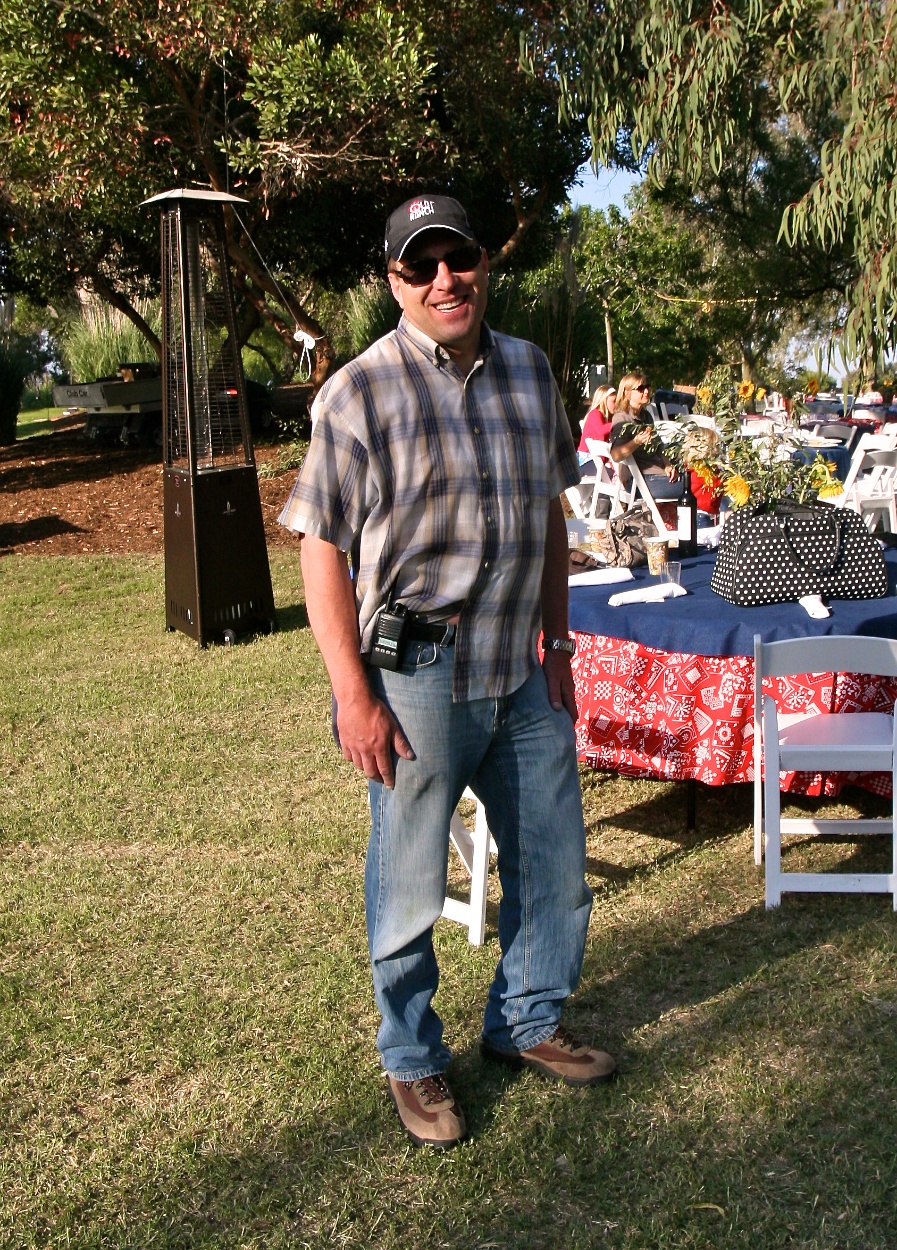
Franco at work....
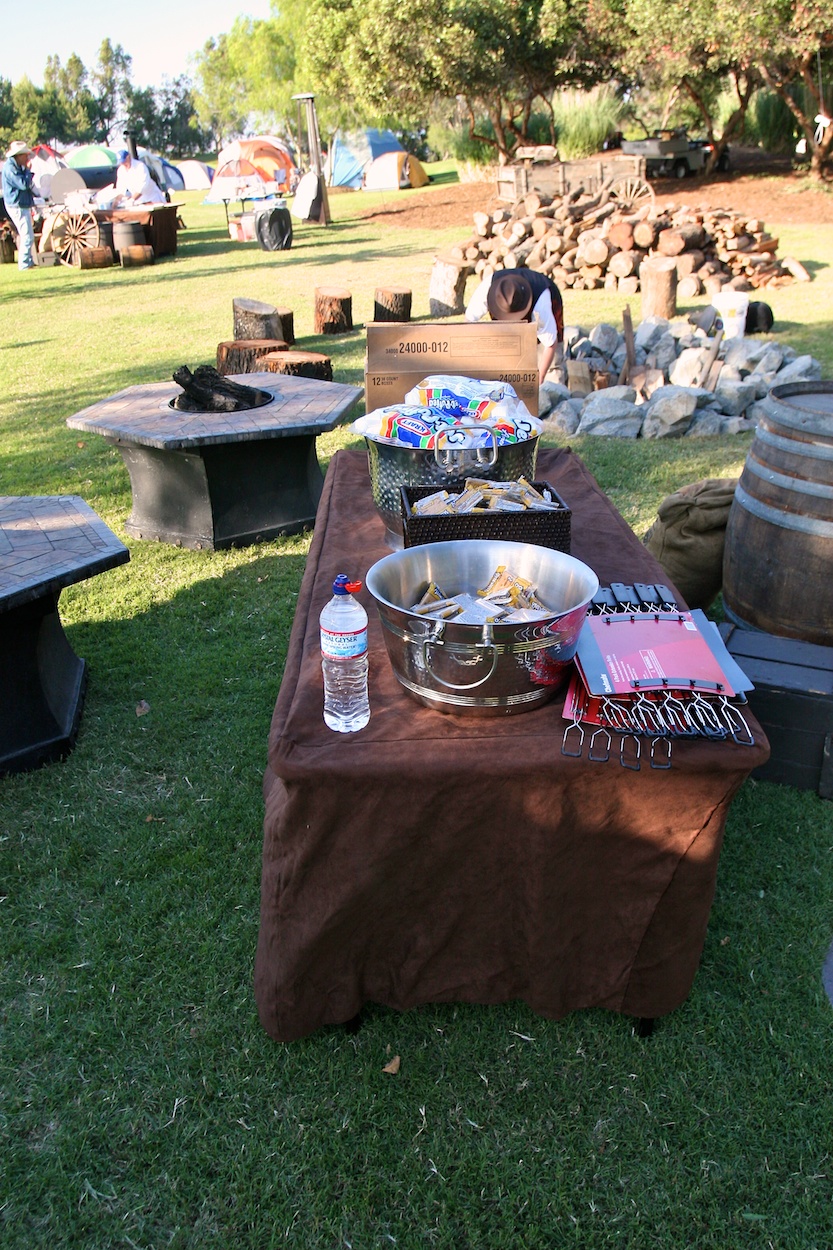
S'Mores in preparation
Did You Know? -
The atmosphere around a chuck wagon has been described as pleasantly barbaric, as might be expected with a group of men far from home who were doing rough, dirty work under sometimes brutal conditions. The language was colorful and often profane.
There were, however, definite rules of behavior around the chuck. Most were unwritten laws understood by all but the greenest of cowhands. For example, riders approaching the campsite always stayed downwind from the chuck wagon so that they didn't cause dust to blow into the food. No horse could be tied to the chuck wagon wheel or hobbled too close to camp. Cowboys looking for warmth never crowded around the cook's fire. There was no scuffling about of kicking up billows of dust around the chuck wagon while meals were being prepared.
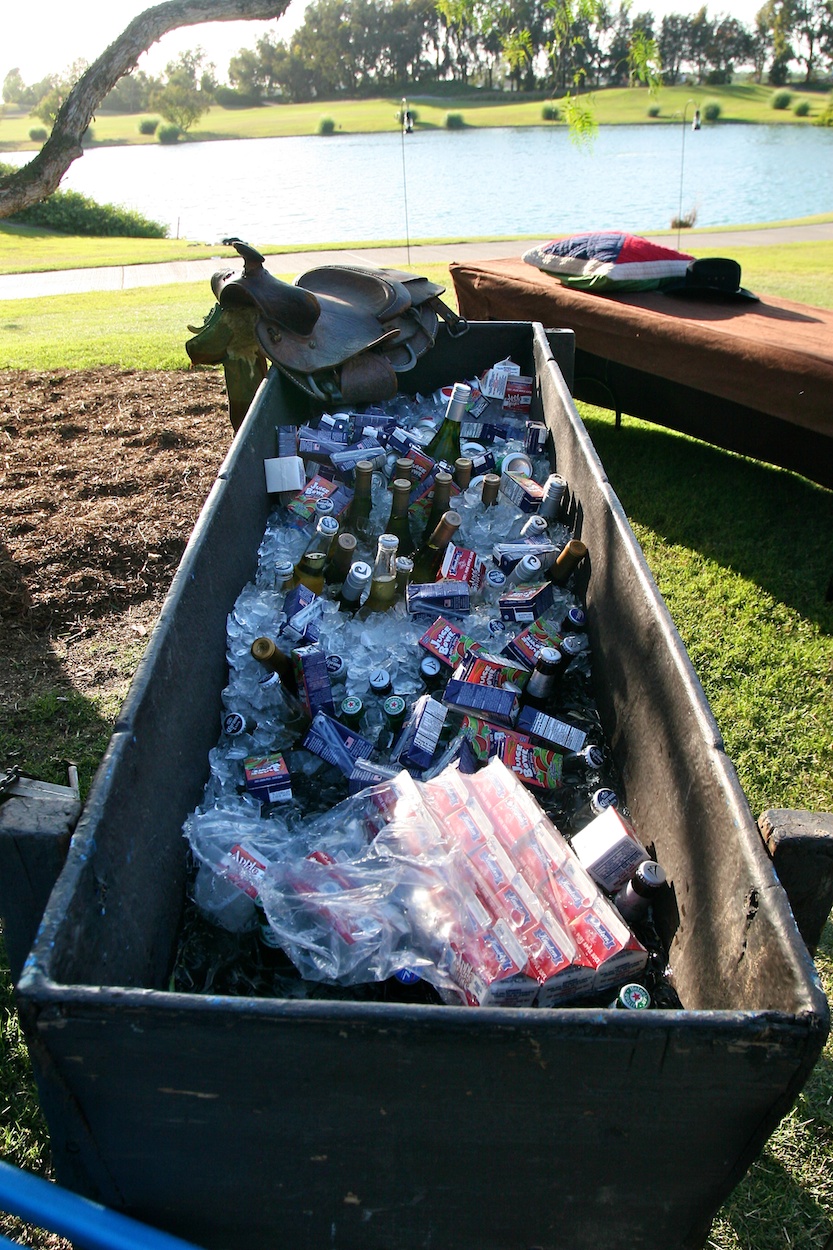
A trough of goodies

We are going to have a bonfire tonight
Did You Know? - A bonfire is a controlled outdoor fire used for informal disposal of burnable waste material or as part of a celebration. Celebratory bonfires are typically designed to burn quickly and may be very large. The name 'bonfire' is from 'bone fire'.
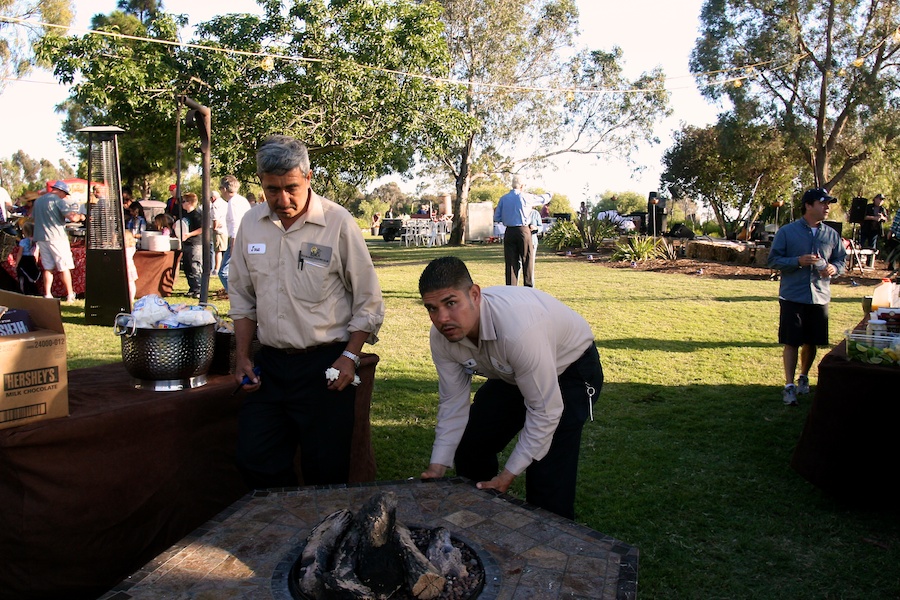
The S'More table gets new gas
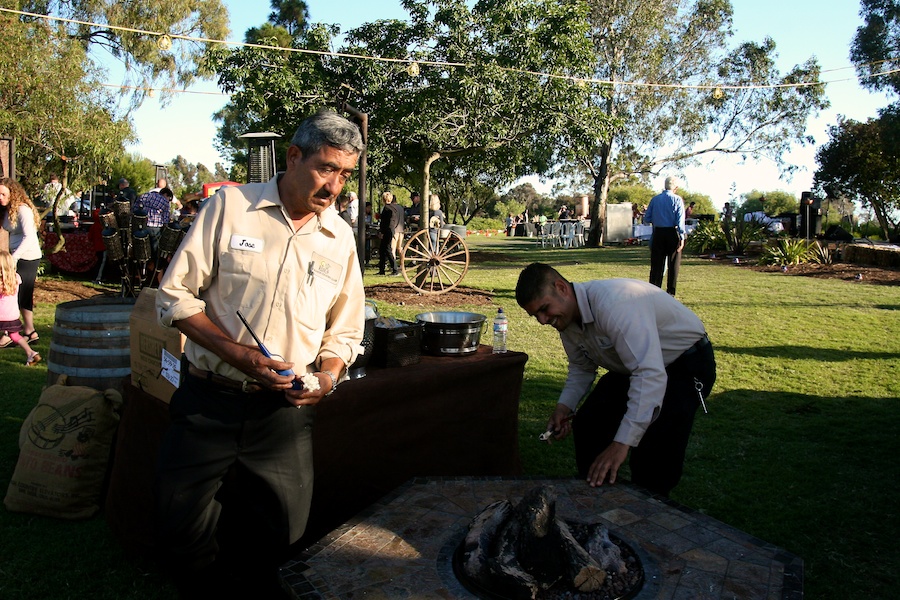
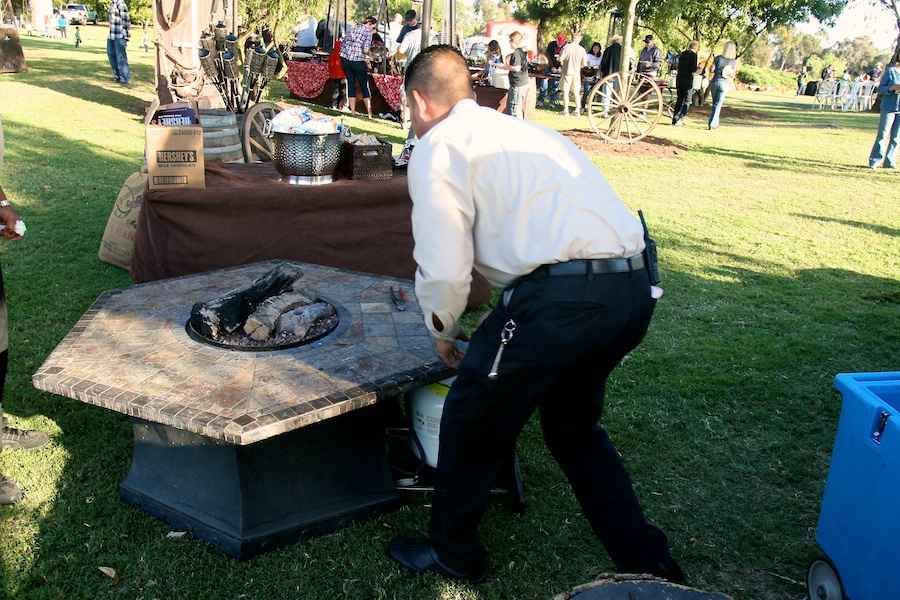
Gas powered S'Mores
... Poooooof
Did You Know? -
S'more appears to be a contraction of the phrase, "some more." While the origin of the dessert is unclear, the first recorded version of the recipe can be found in the publication "Tramping and Trailing with the Girl Scouts" of 1927.
The recipe is credited to Loretta Scott Crew, who reportedly made them by the campfire for the Scouts. It is unknown whether the Girl Scouts were the first to make s'mores, but there appears to be no earlier claim to this snack. Although it is unknown when the name was shortened, recipes for "Some Mores" are in various Girl Scout publications until at least 1973.
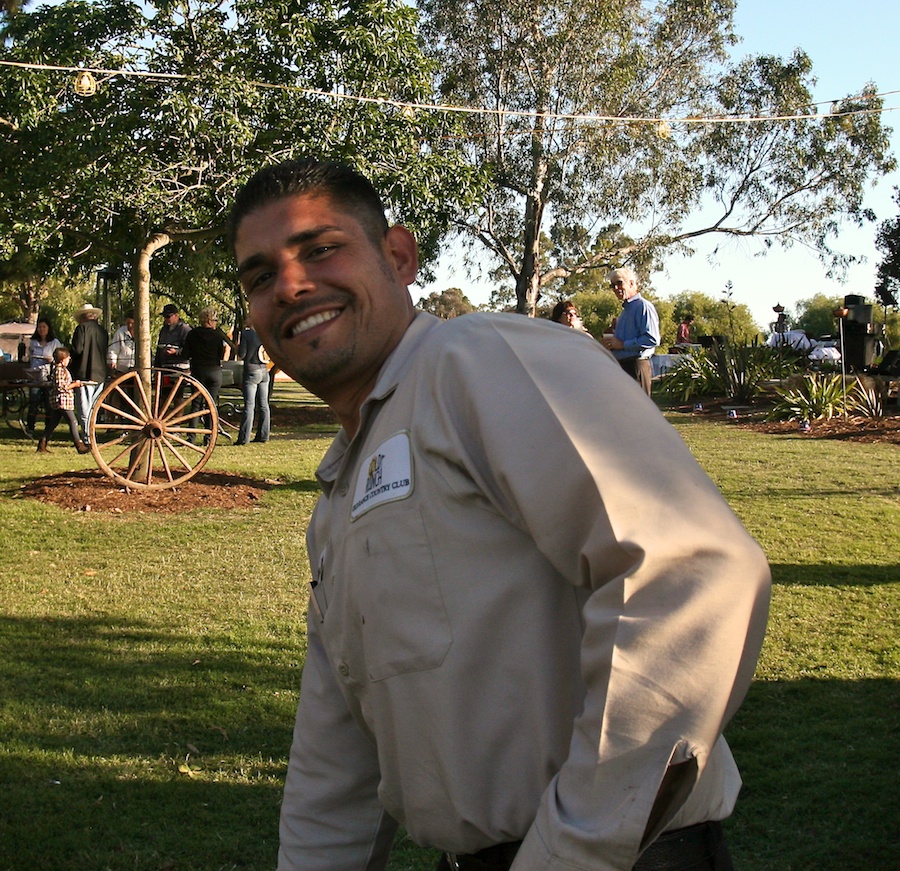
He can fix anything!
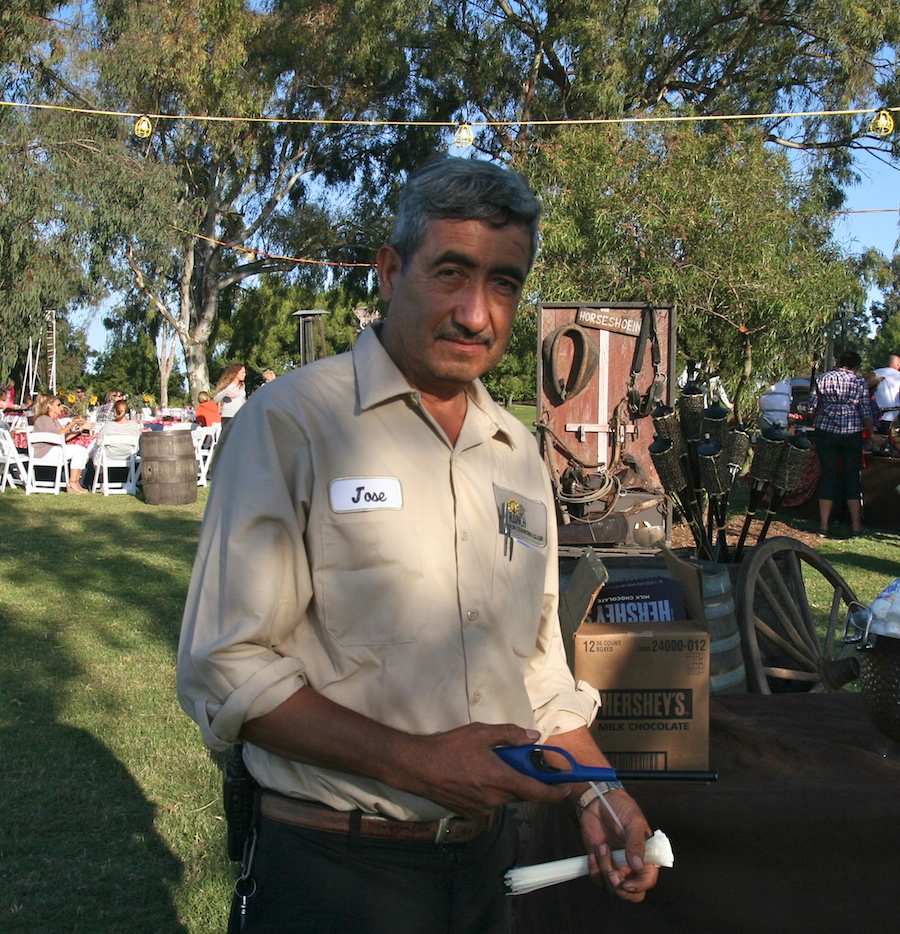
About to test it out... Stand back!
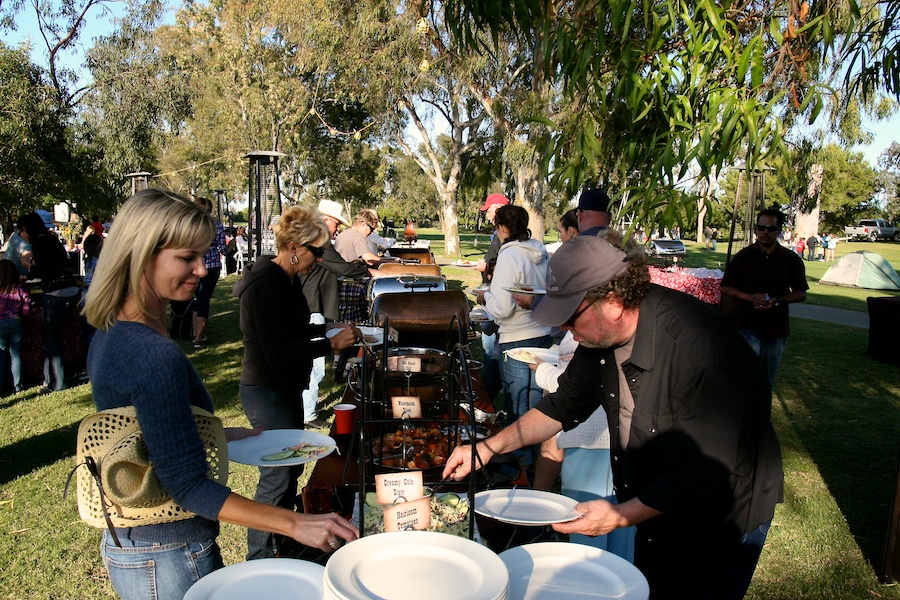
The grub is popular.... BBQ anything
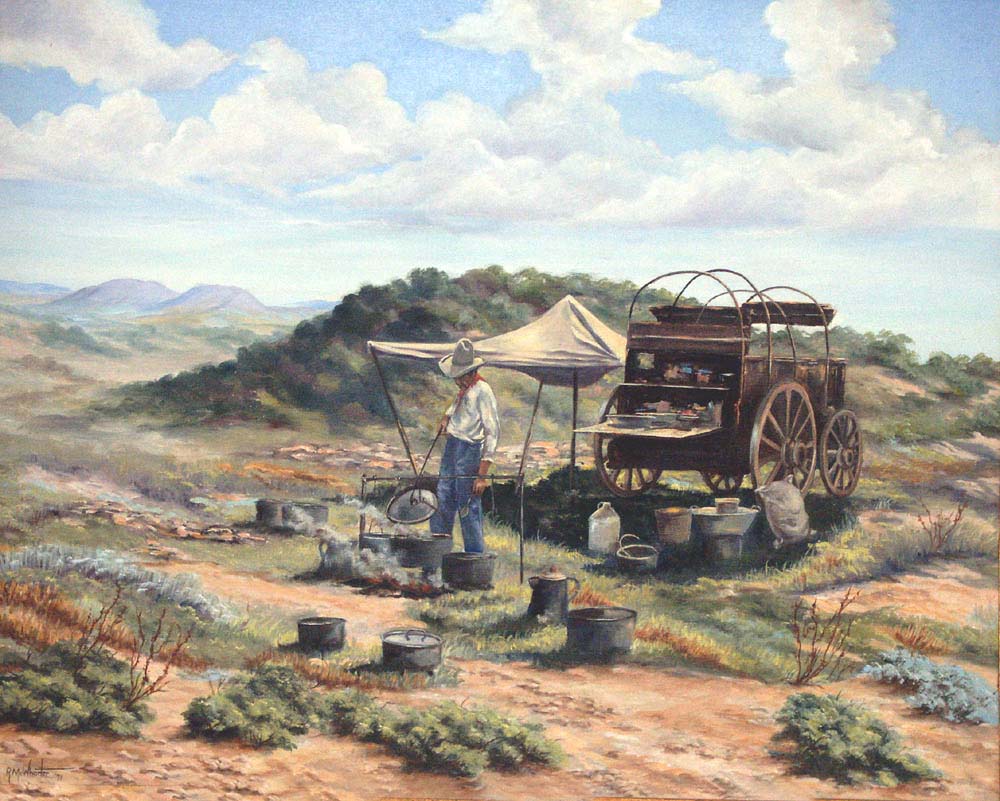
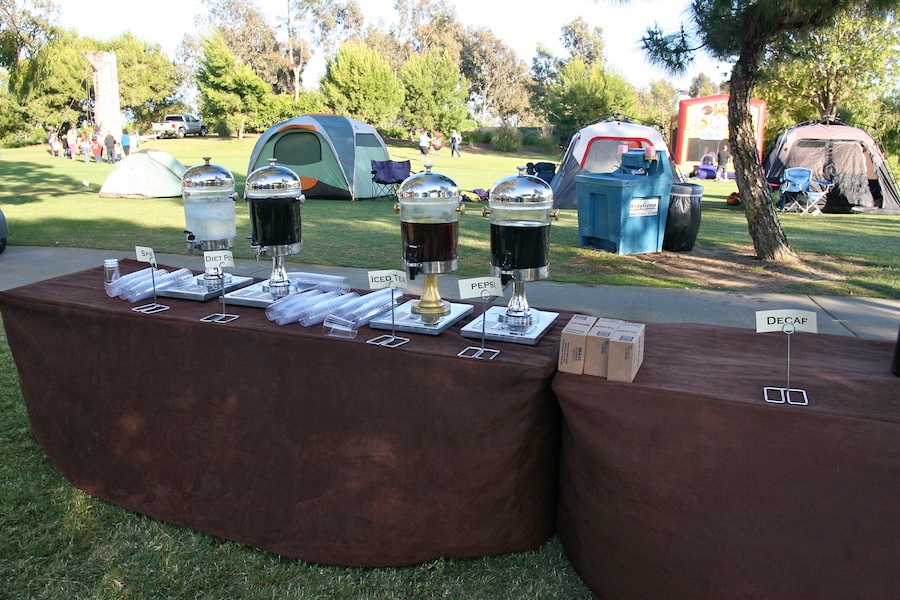
OK, who made off with the decaf
Did You Know? -
Decaffeination is the act of removing caffeine from coffee beans, cocoa, tea leaves and other caffeine-containing materials. (While caffeine-free soft drinks are occasionally referred to as "decaffeinated", some are better termed "uncaffeinated": prepared without adding caffeine during production.) Despite removal of caffeine, many decaffeinated drinks still have around 1–2% of the original caffeine remaining in them.
In the case of coffee, various methods can be used. The process is usually performed on unroasted (green) beans, and starts with steaming of the beans. They are then rinsed with a solvent that extracts the caffeine while leaving the other essential chemicals in the coffee beans.
The process is repeated anywhere from 8 to 12 times until it meets either the international standard of having removed 97% of the caffeine in the beans or the EU standard of having the beans 99.9% caffeine-free by mass. Coffee contains over 400 chemicals important to the taste and aroma of the final drink: It is, therefore, challenging to remove only caffeine while leaving the other chemicals at their original concentrations.

Roping machine was a load of fun
Did You Know? - Calf roping, also known as tie-down roping, is a rodeo event that features a calf and a rider mounted on a horse. The goal of this timed event is for the rider to catch the calf by throwing a loop of rope from a lariat around its neck, dismount from the horse, run to the calf, and restrain it by tying three legs together, in as short a time as possible.
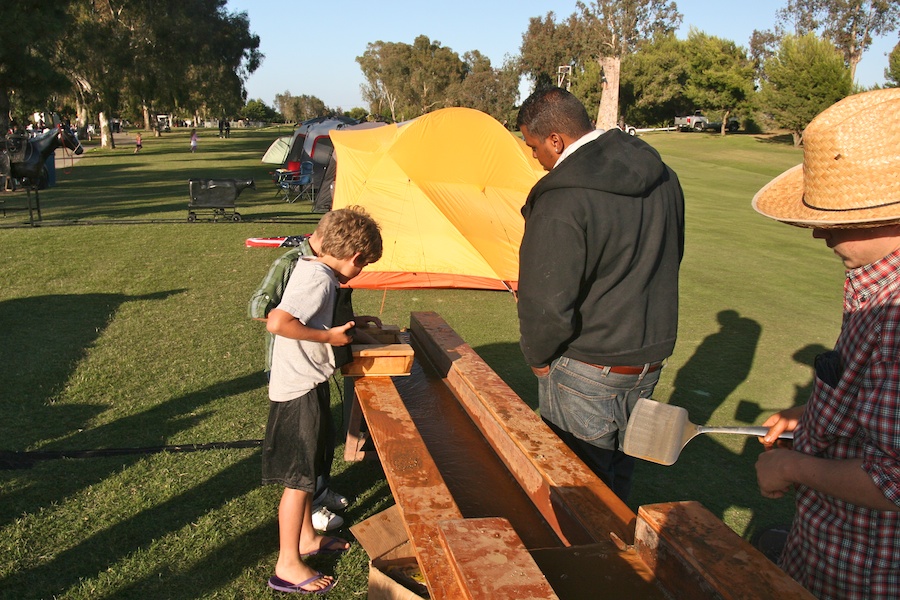
Panning for gold
Did You Know? -
Gold panning is a very simple process. Once a suitable placer deposit is located, some gravel from it is scooped into a pan, where it is then gently agitated in water and the gold sinks to the bottom of the pan. Materials with a low specific gravity are allowed to spill out of the pan, whereas materials with a high specific gravity sink to the bottom of the sediment during agitation and remain within the pan for examination and collection by the gold panner. These dense materials usually consist primarily of a black, magnetite sand with whatever gemstones or metal dust that may be found in the deposit that is used for source material.
Gold panning usually turns up only gold dust that is usually collected as a souvenir. Nuggets and considerable amounts of dust are occasionally found, but panning mining is not generally lucrative; panning for gold can be used to locate the larger parent veins of gold that most placer deposits originate from.
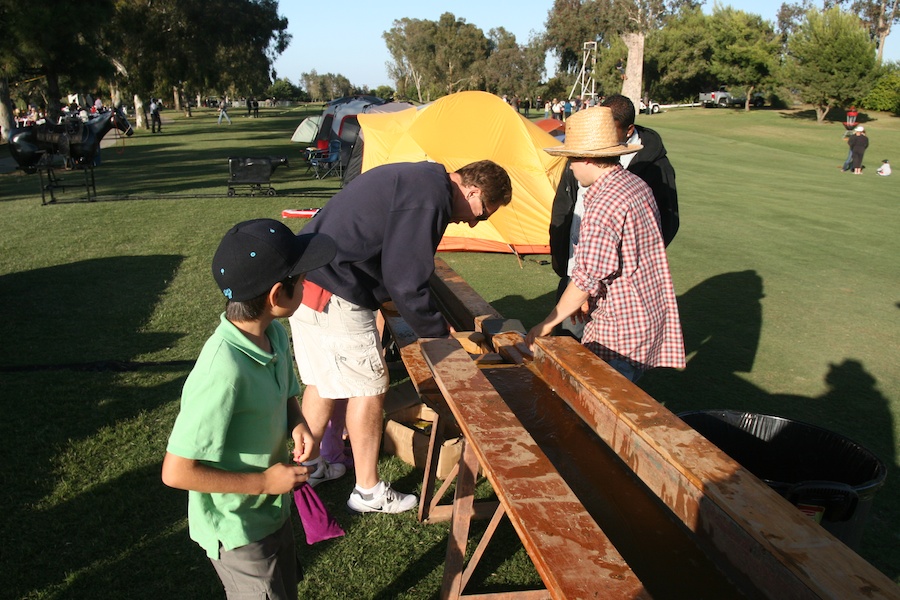

These tents were a bit closer to the food.... Maybe they had a good idea

Ah ha.... How they kept everything warm
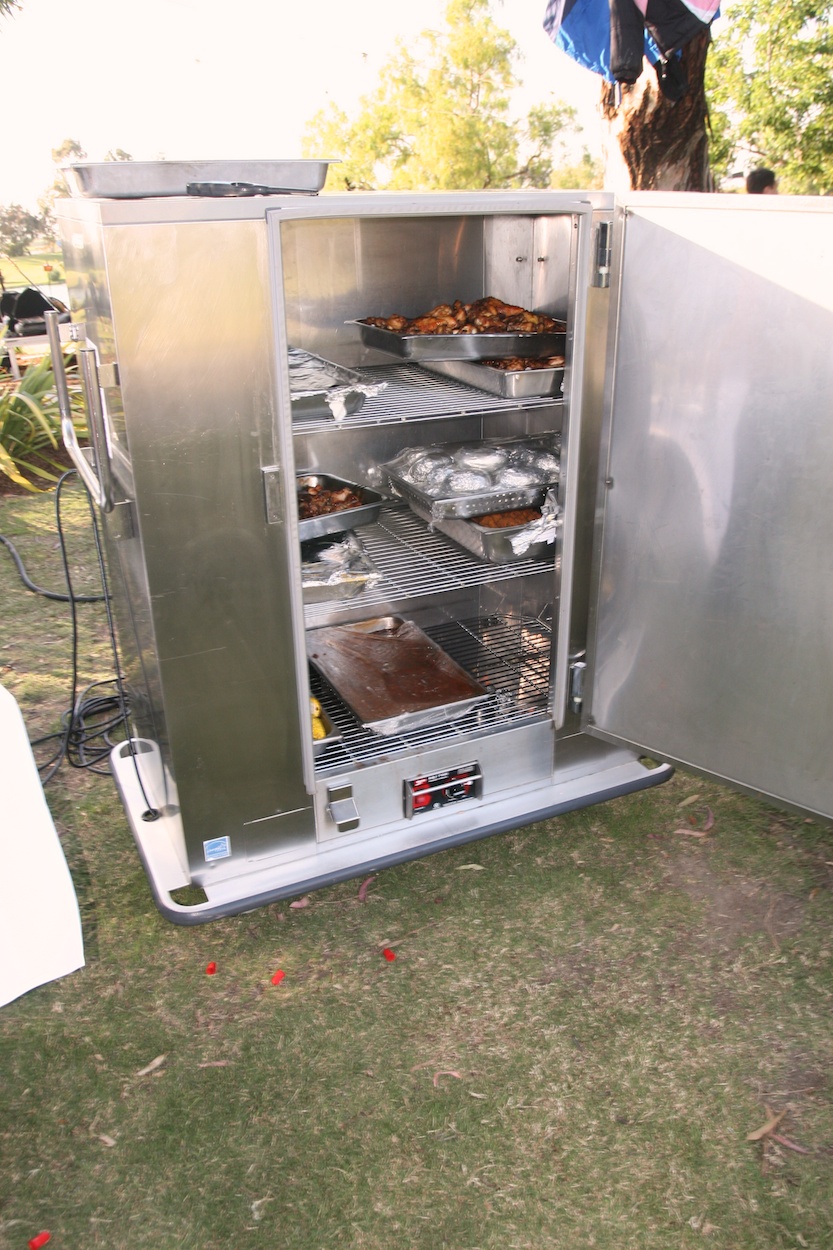
If only "Cookie" had one of these 100 years ago

Everyone is busy
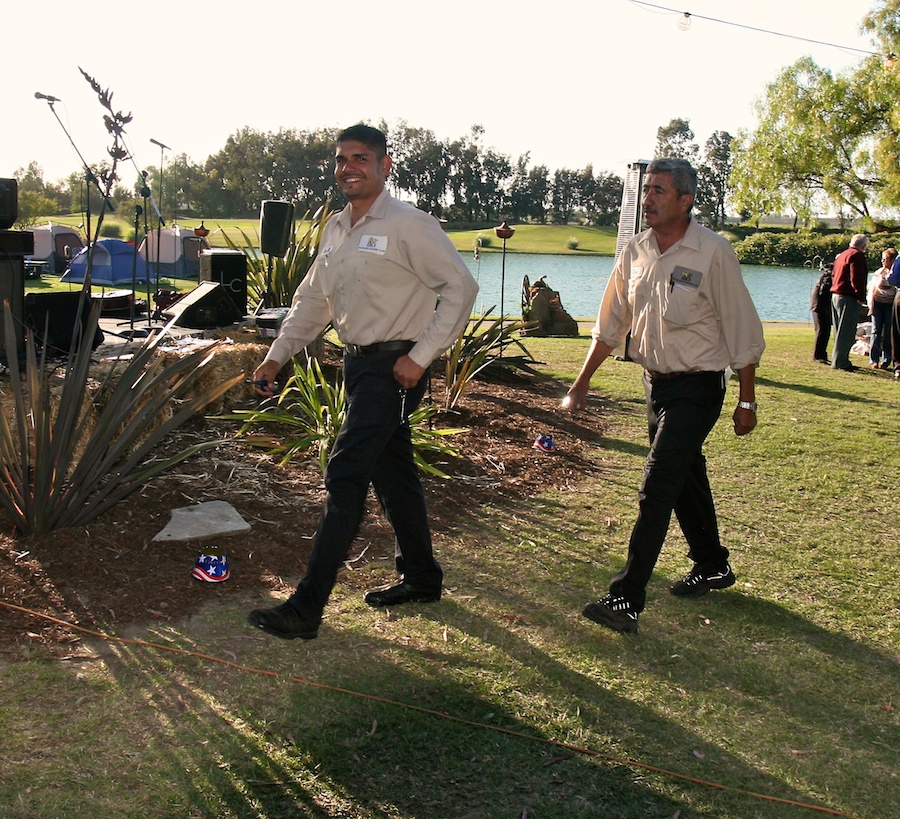
Off to fix another broke....
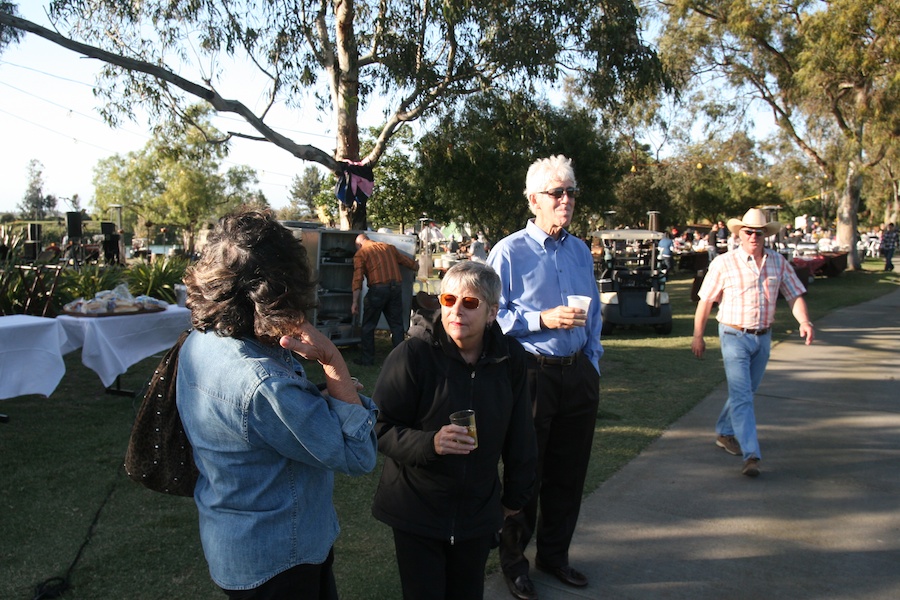
Bunny and Sue are thinking about a horse ride....
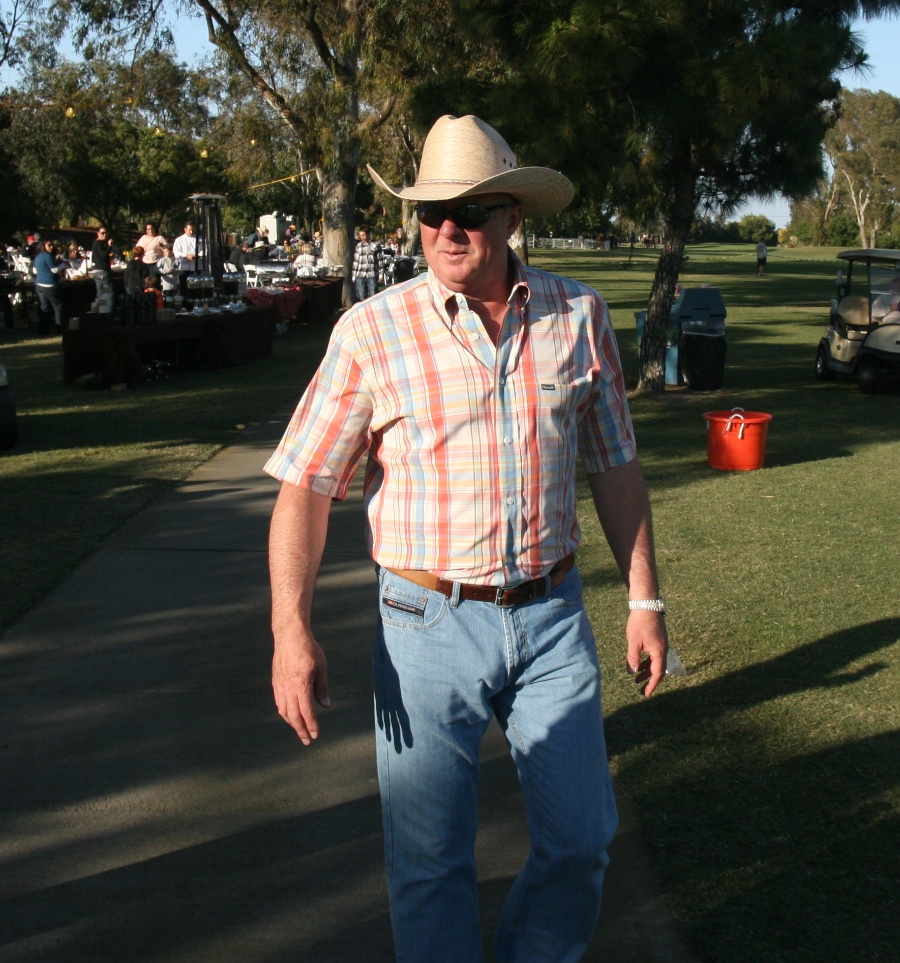
The head wrangler
Did You Know? - The word "cowboy" appeared in the English language by 1725. It appears to be a direct English translation of vaquero, a Spanish word for an individual who managed cattle while mounted on horseback. It was derived from vaca, meaning "cow,"
which came from the Latin word vacca. Another English word for a cowboy, buckaroo, is an Anglicization of vaquero. At least one linguist has speculated that the word "buckaroo" derives from the Arabic word bakara or bakhara, also meaning "heifer" or "young cow", and may have entered Spanish during the centuries of Islamic rule.
Originally, the term may have been intended literally—"a boy who tends cows." By 1849 it had developed its modern sense as an adult cattle handler of the American West. Variations on the word "cowboy" appeared later. "Cowhand" appeared in 1852, and "cowpoke" in 1881, originally restricted to the individuals who prodded cattle with long poles to load them onto railroad cars for shipping.
Names for a cowboy in American English include buckaroo, cowpoke, cowhand, and cowpuncher. "Cowboy" is a term common throughout the west and particularly in the Great Plains and Rocky Mountains, "Buckaroo" is used primarily in the Great Basin and California, and "cowpuncher" mostly in Texas and surrounding states.

Whoa there partner....
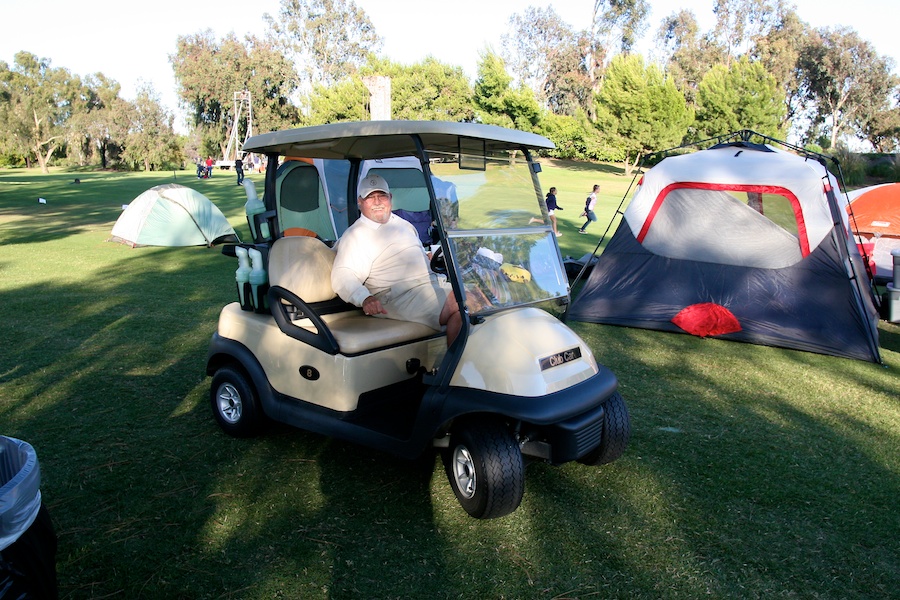
Gene rode his own horse out to the campsite
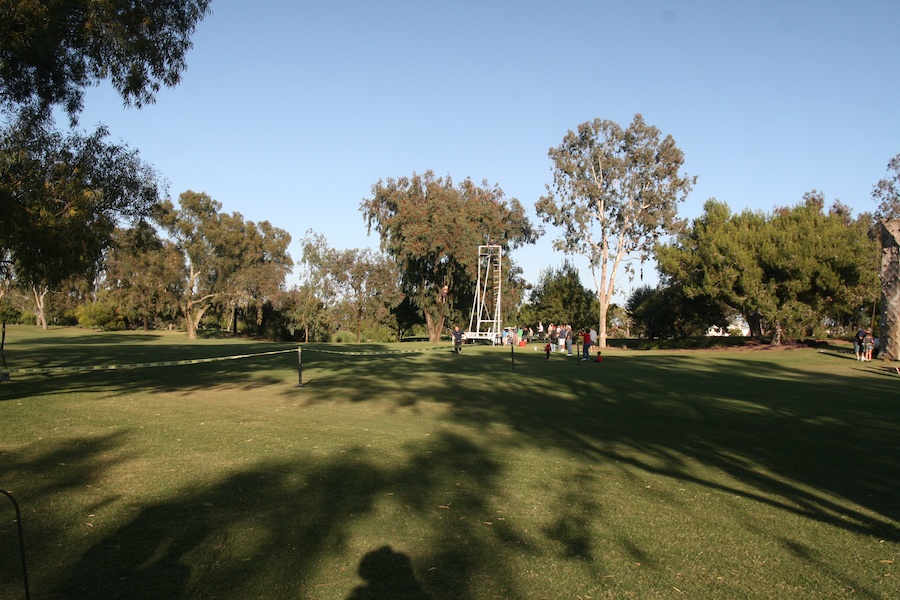
The shadows are getting longer
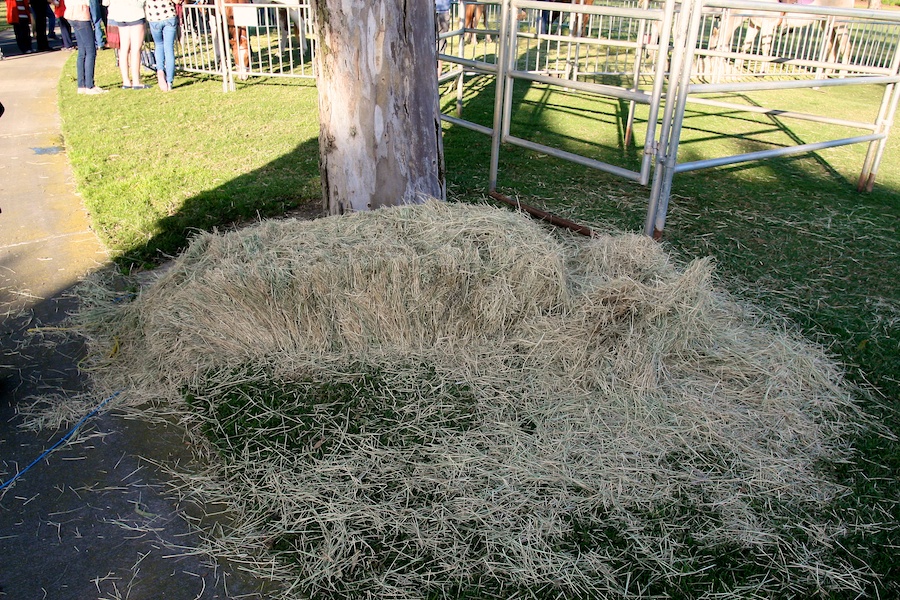
Dinner is served

"Who said dinner???"

BBQ and wine... a great combination
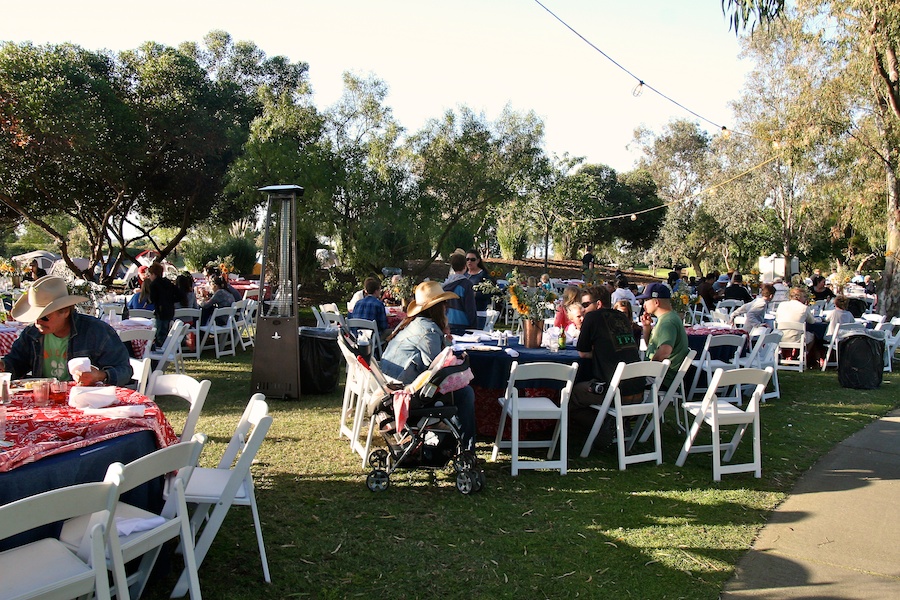
The dinner bell was apparently rung
Did You Know? - The triangle is an idiophone type of musical instrument in the percussion family. It is a bar of metal, usually steel but sometimes other metals like beryllium copper, bent into a triangle shape. The instrument is usually held by a loop of some form of thread or wire at the top curve. It was first made around the 16th century.
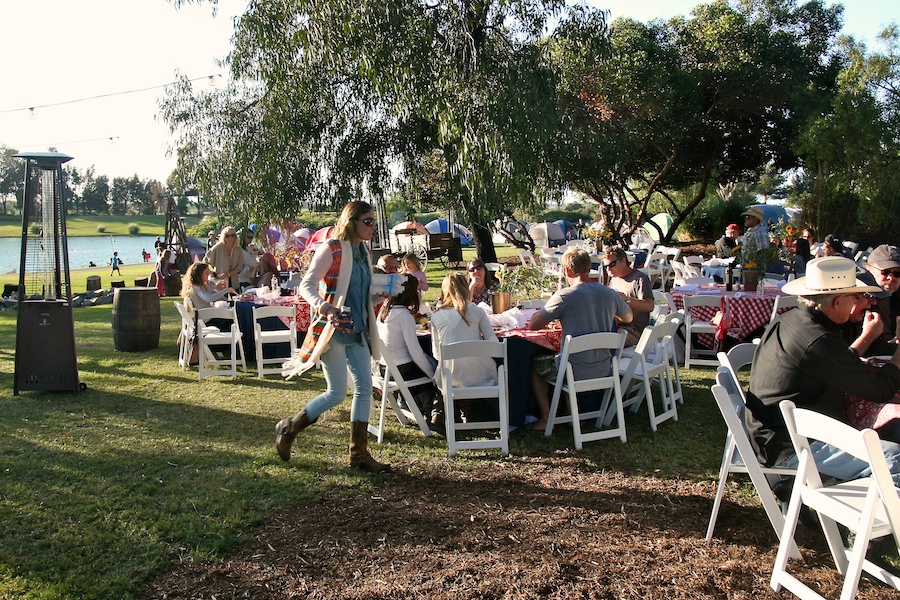
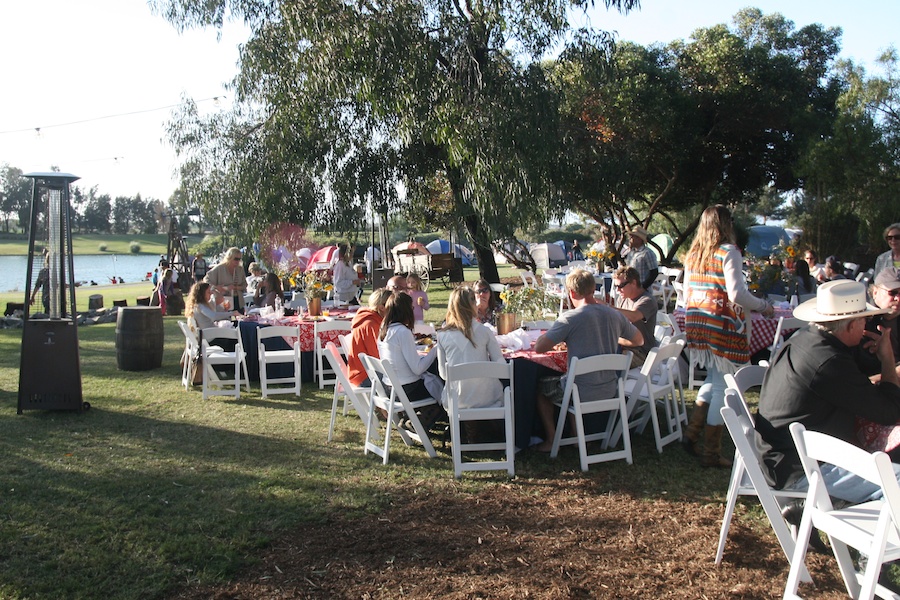
Donner time
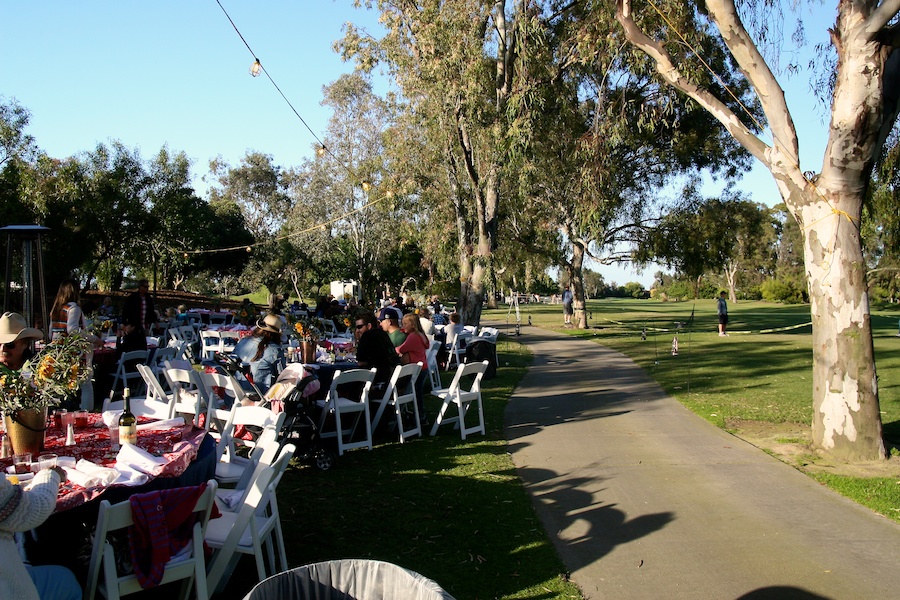
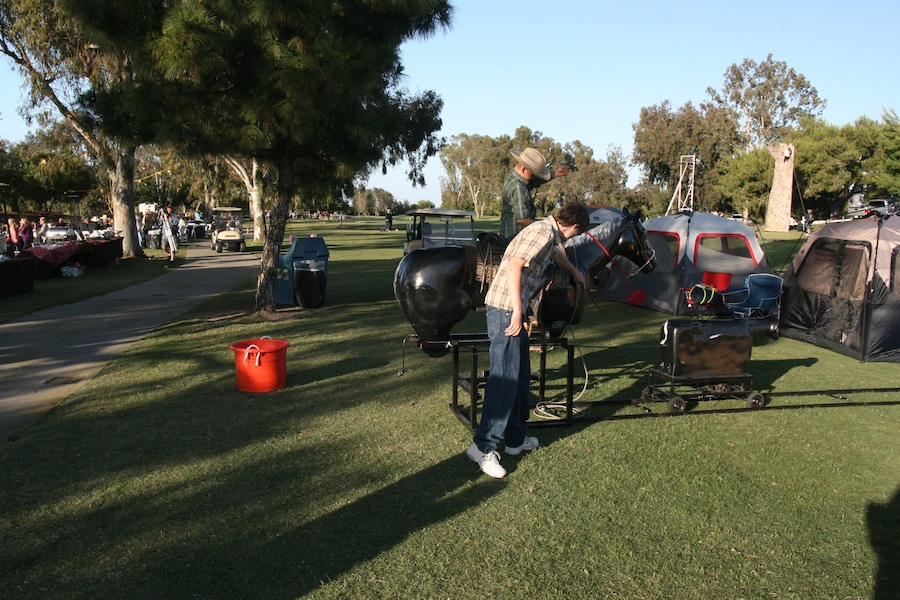
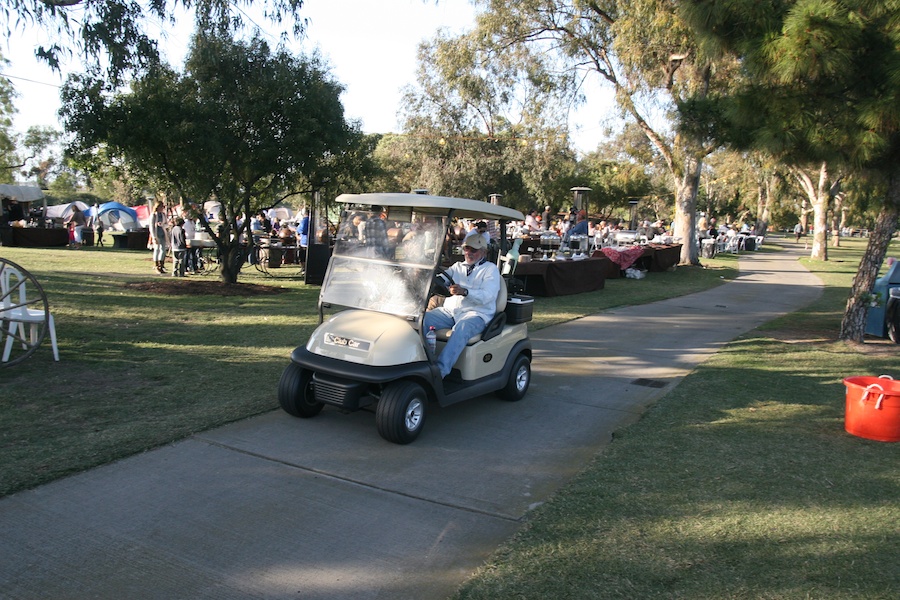
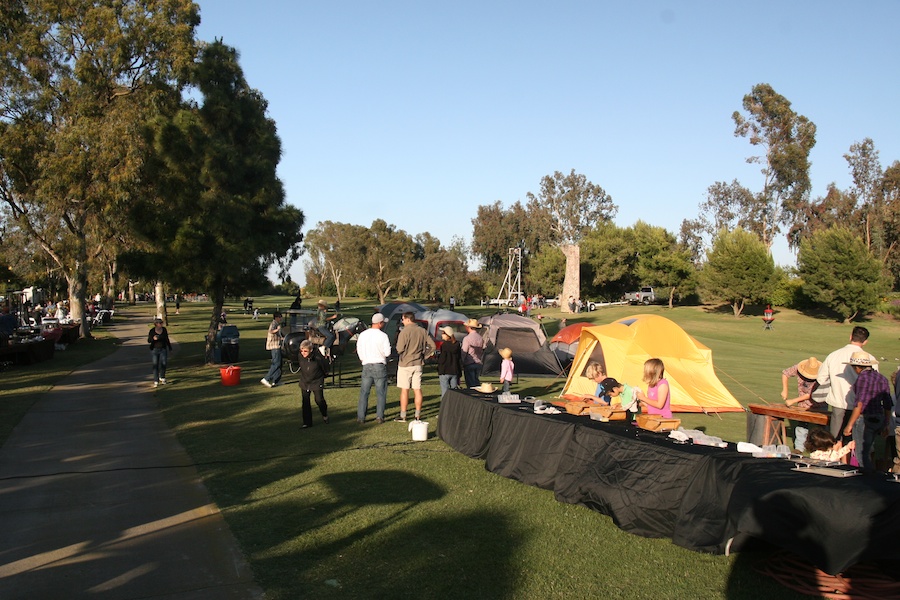
Gold panning is still underway
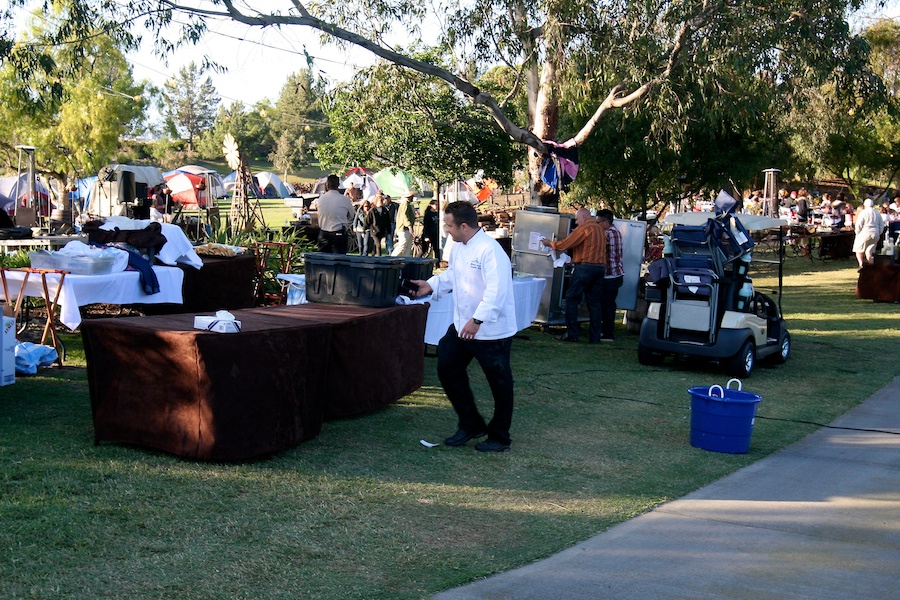
The chef is heading back
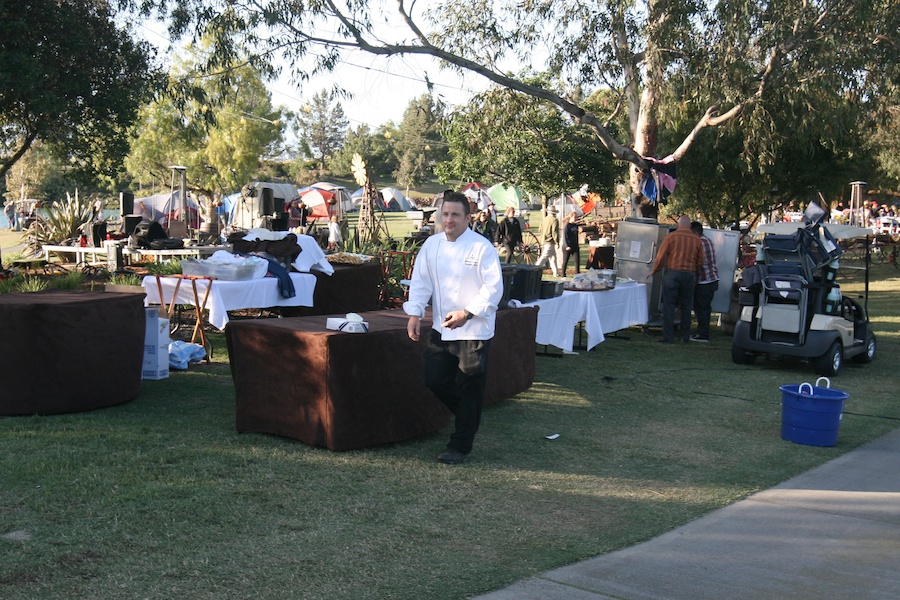
What did he forget??
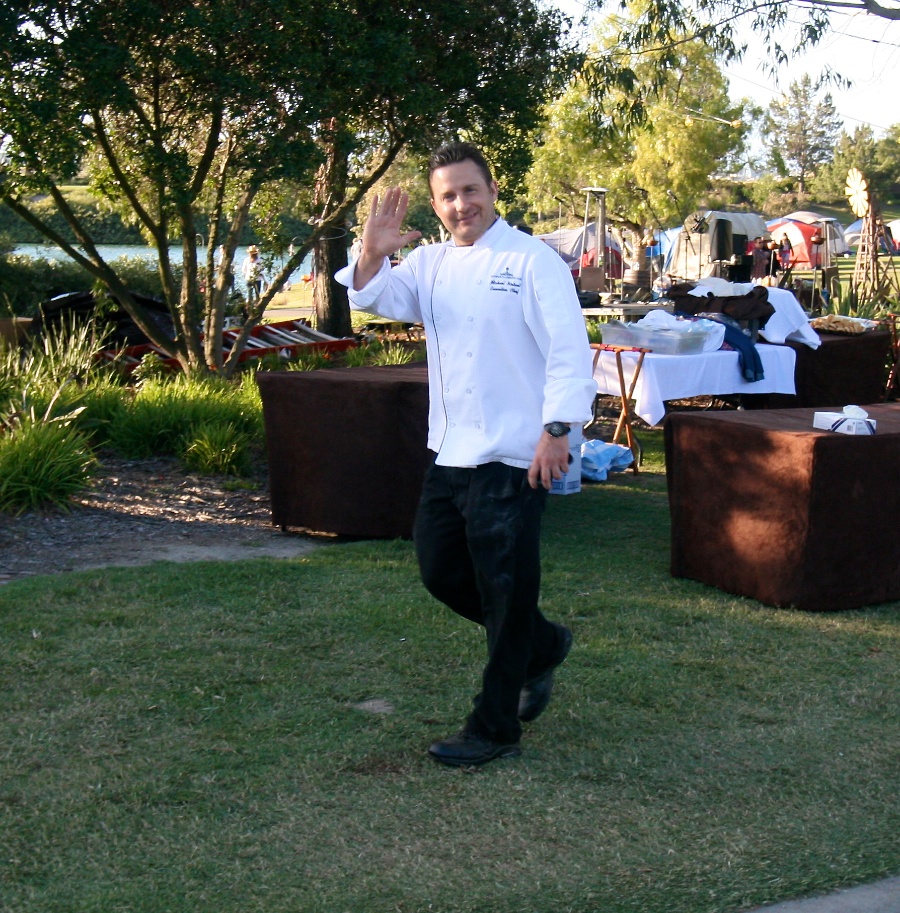
Be right back.....
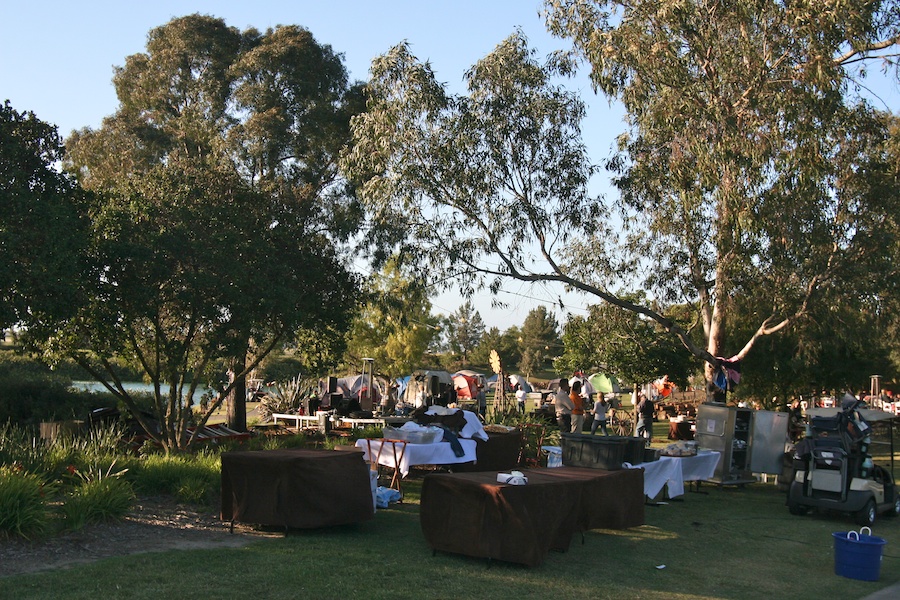
At 10:30 Things Were Getting Quiet
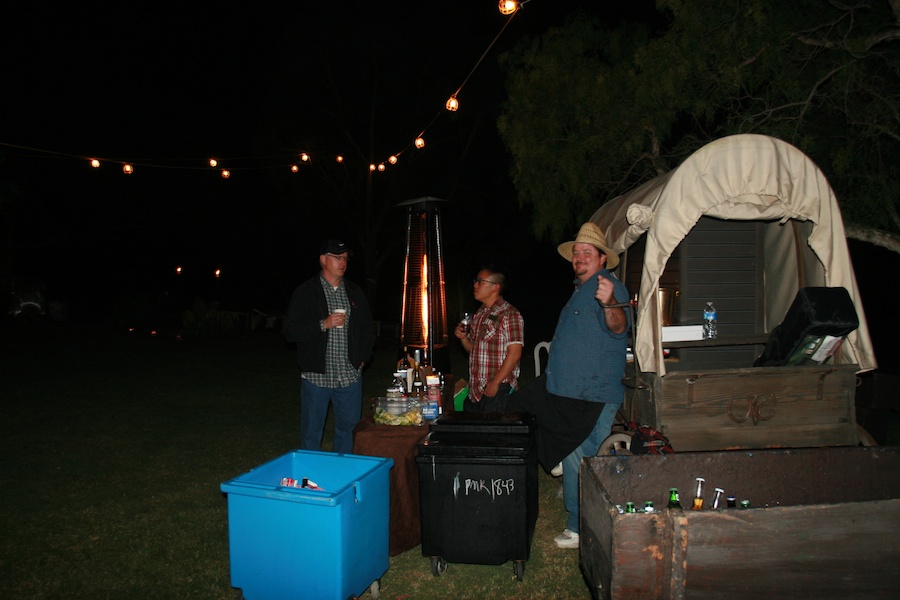
The bar was open
-
The bar keeps were still on duty
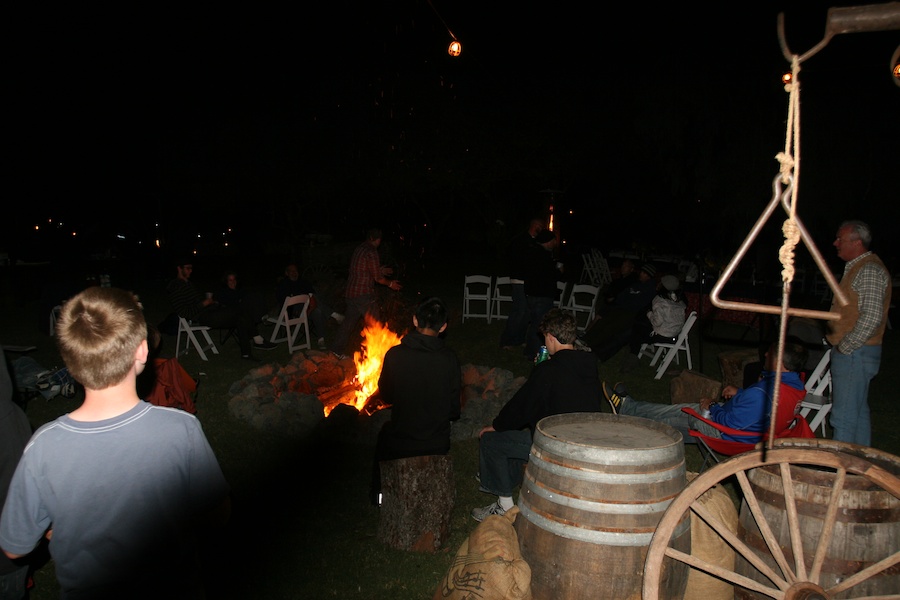
The fires were burining quite well
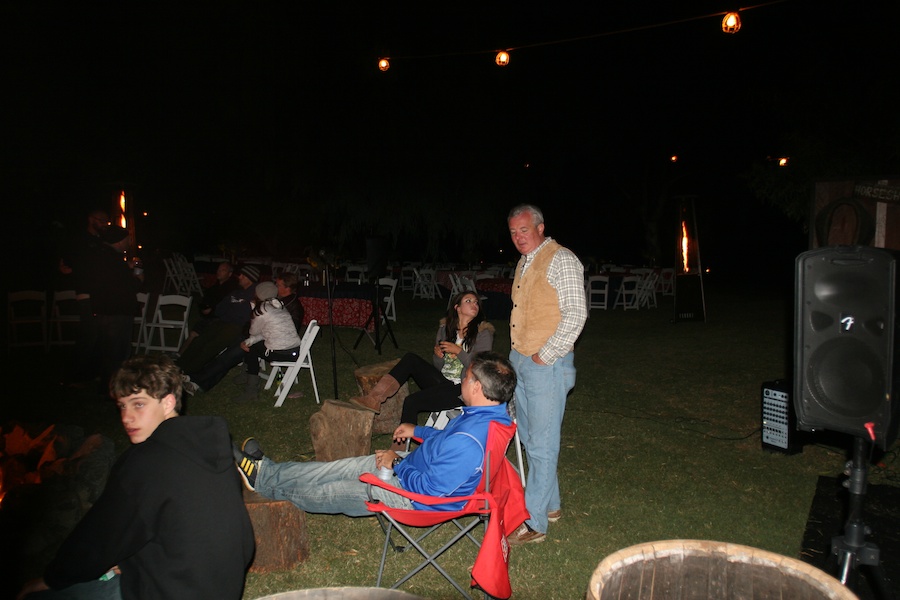
Lazy days
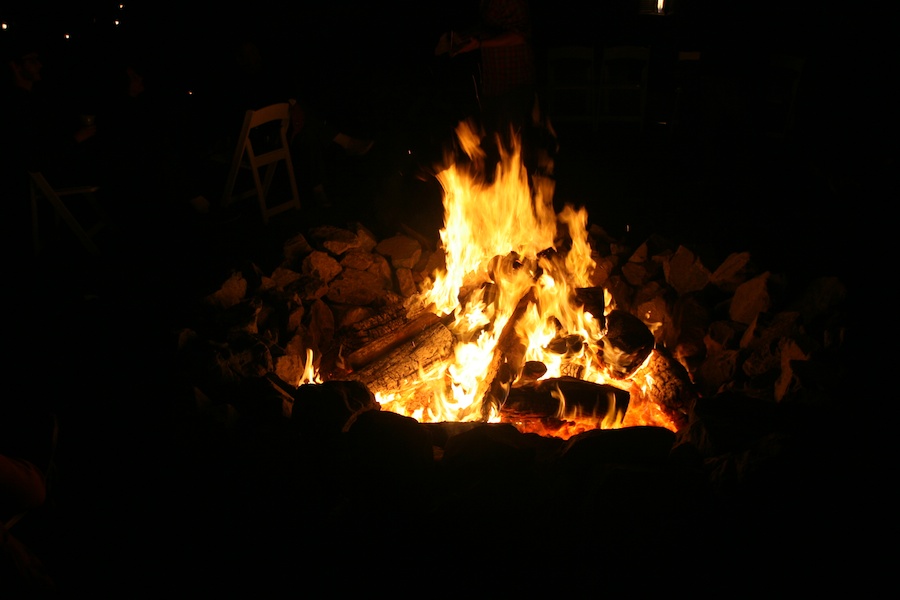
Warm was in demand....
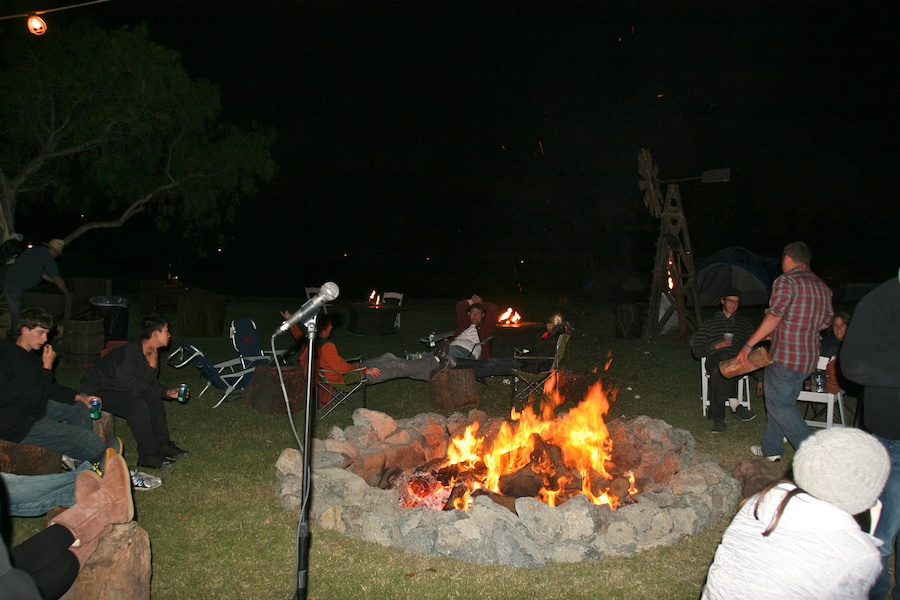
Ghost stories?

Chris was loading the fire with fresh wood....
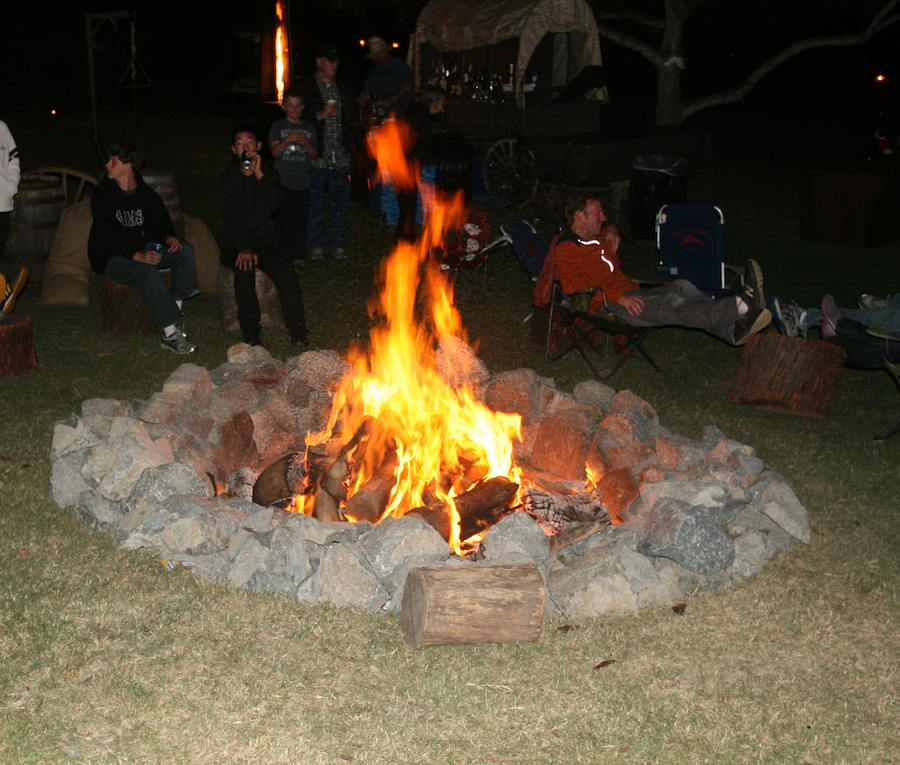
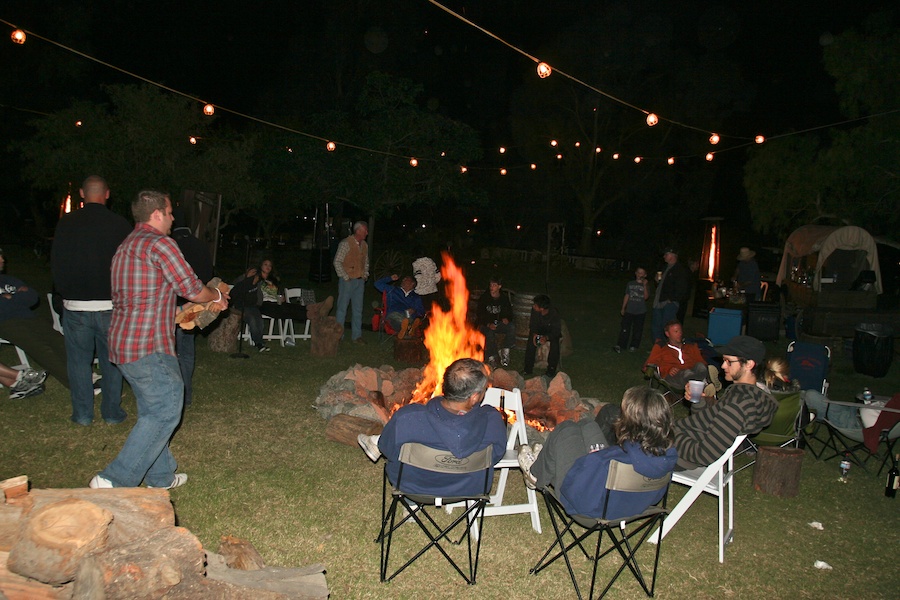
Put another log on the fire.... Great name for a country song
Did You Know? - Thomas Paul 'Tompall' Glaser (born September 3, 1933 in Spalding, Nebraska[1]) is an American country music artist. Active since the 1950s, he has recorded both as a solo artist and with his brothers Chuck and Jim in the trio Tompall & the Glaser Brothers. Tompall Glaser's highest-charting solo single was Shel Silverstein's "Put Another Log on the Fire (The Male Chauvinist National Anthem)", which peaked at #21 on the Billboard Hot Country Singles (now Hot Country Songs) charts in 1975 and appeared on the album Wanted! The Outlaws. The Glaser Bros. also were back-up singers for Marty Robbins in the 1950s.
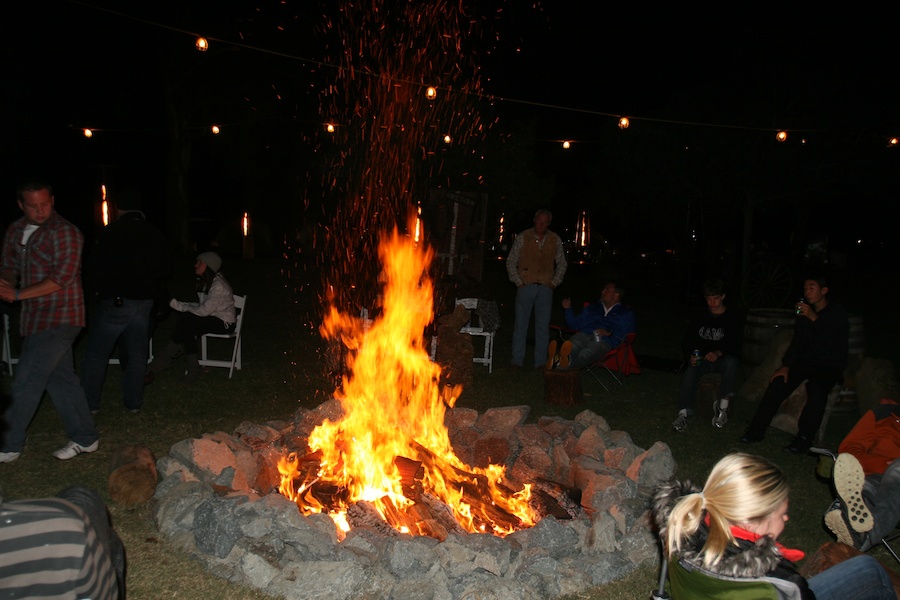
The embers were flying

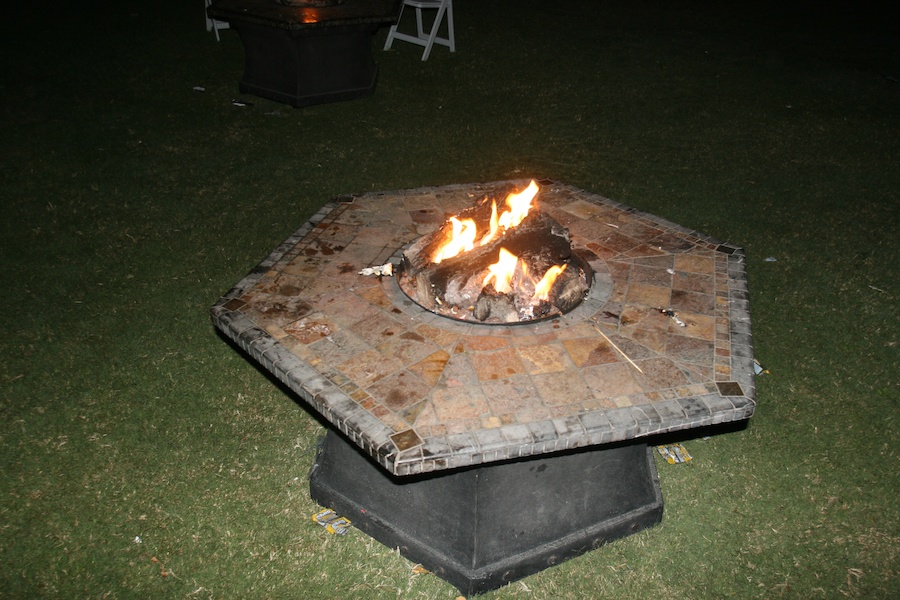
Poor table... He may never bee the same
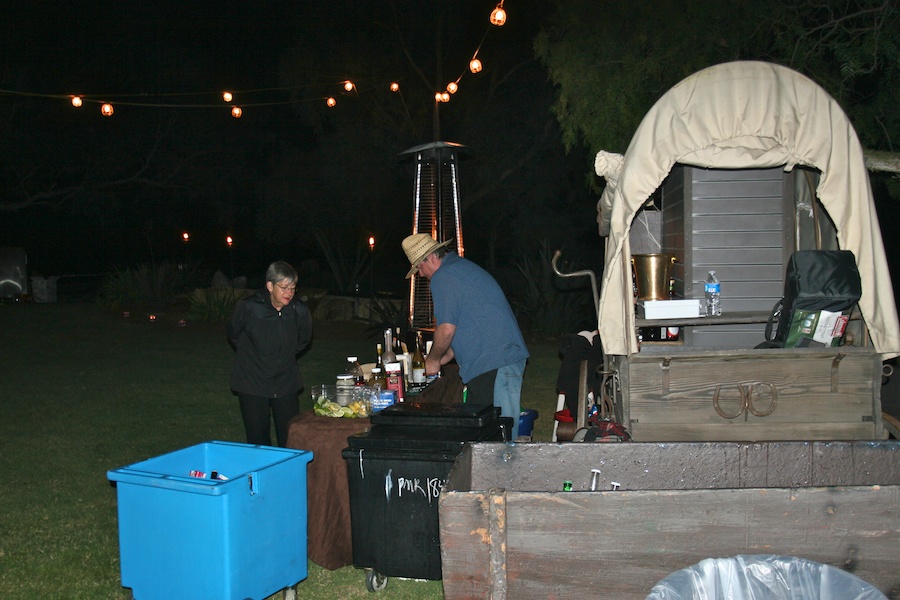
One more glass of wine please
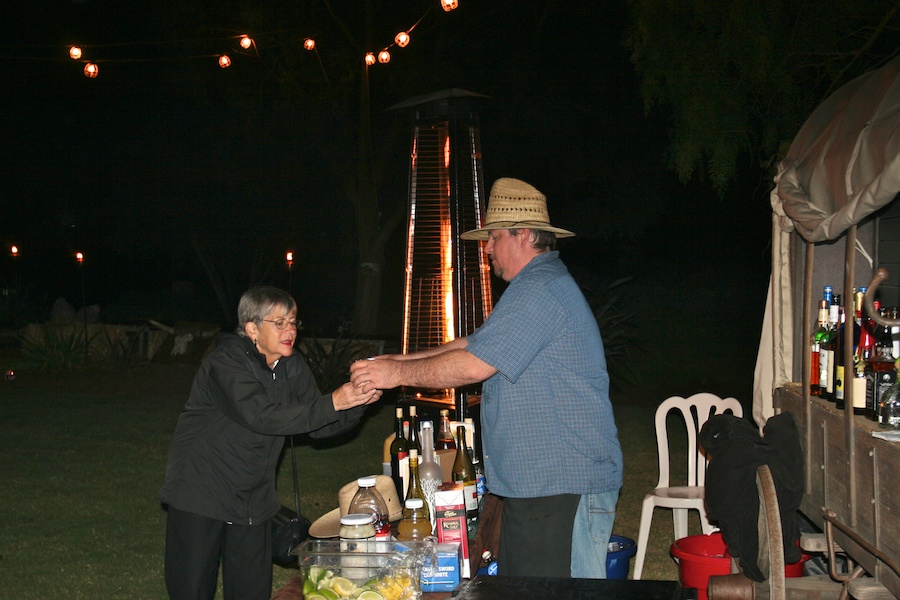
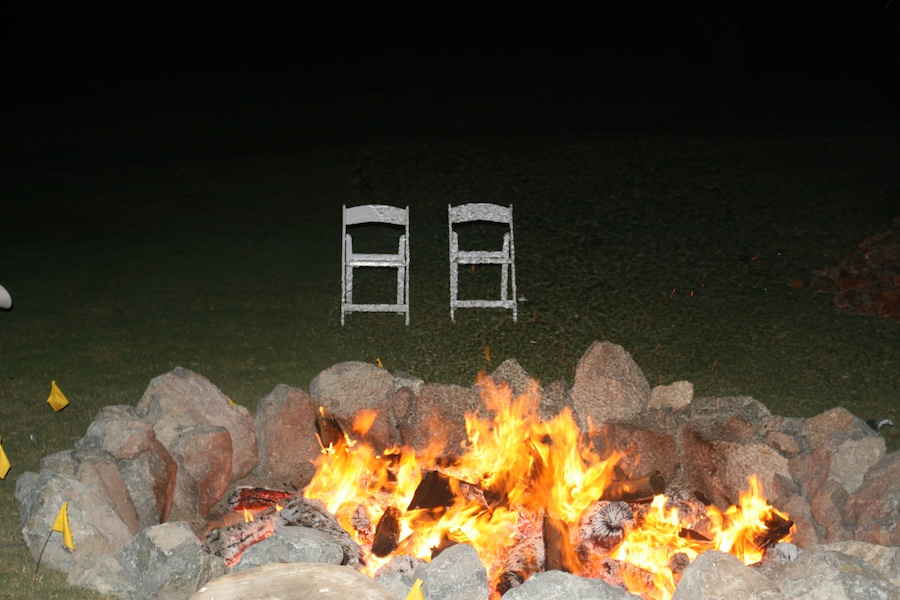
Too hot to sit that close
